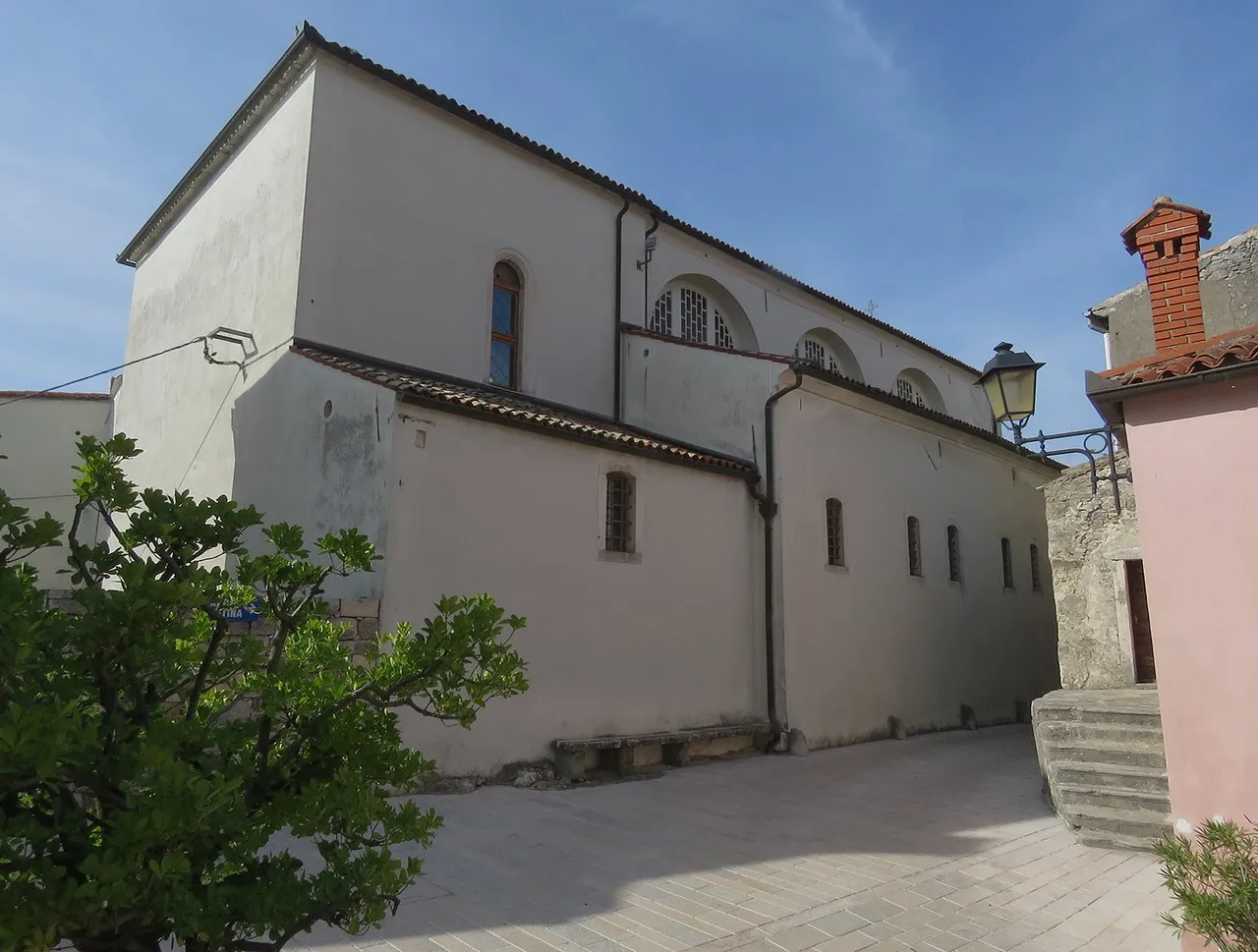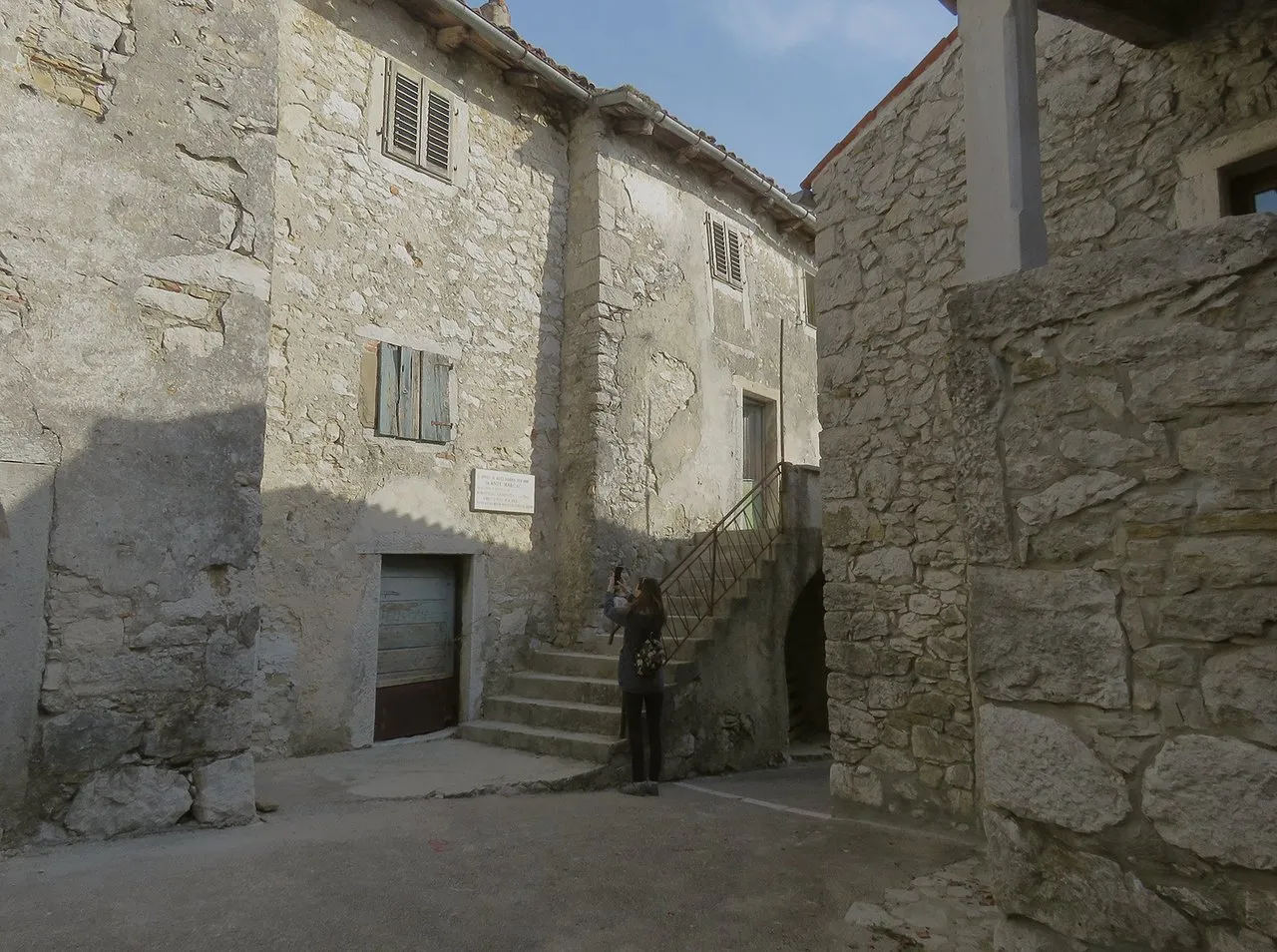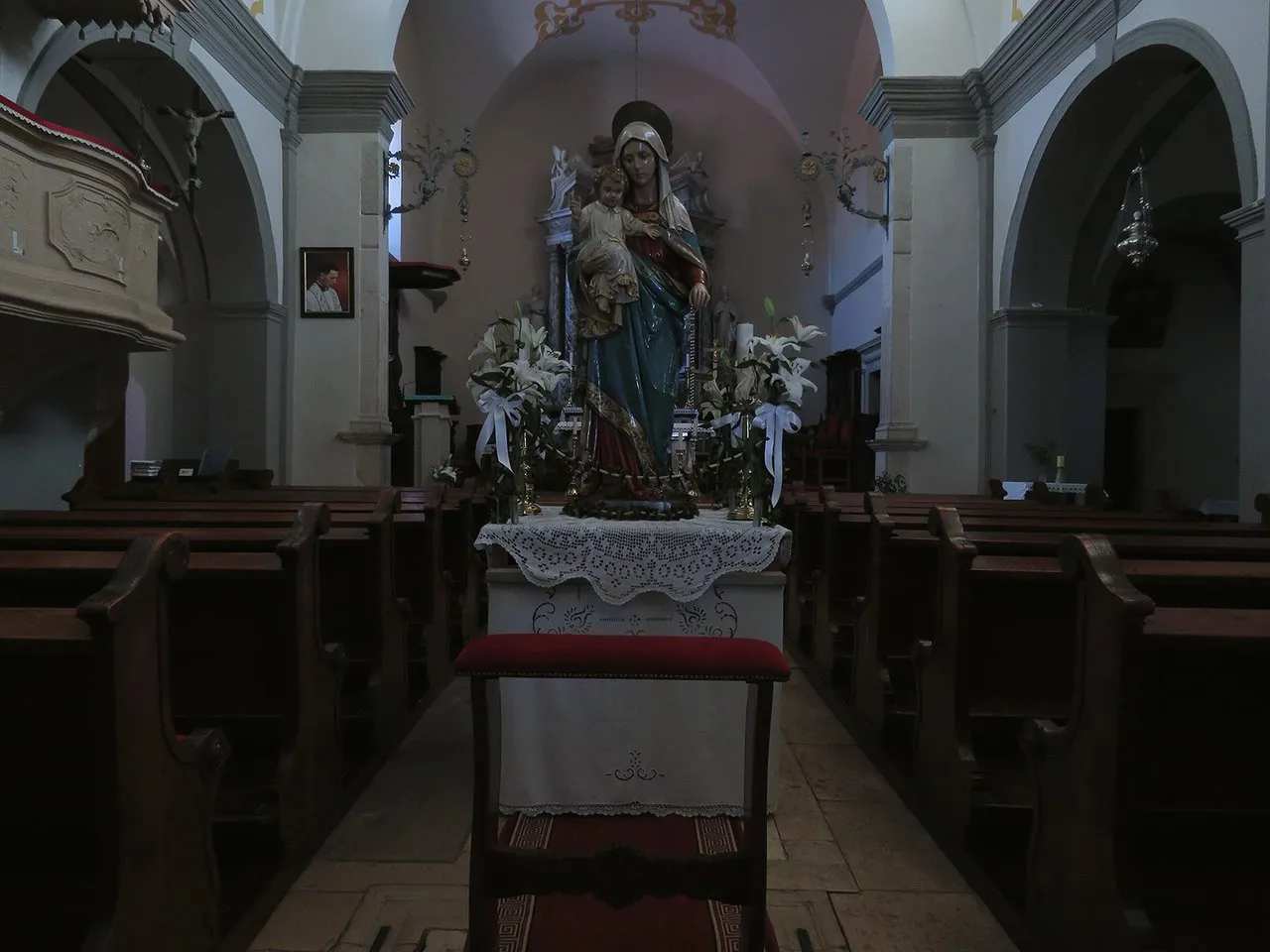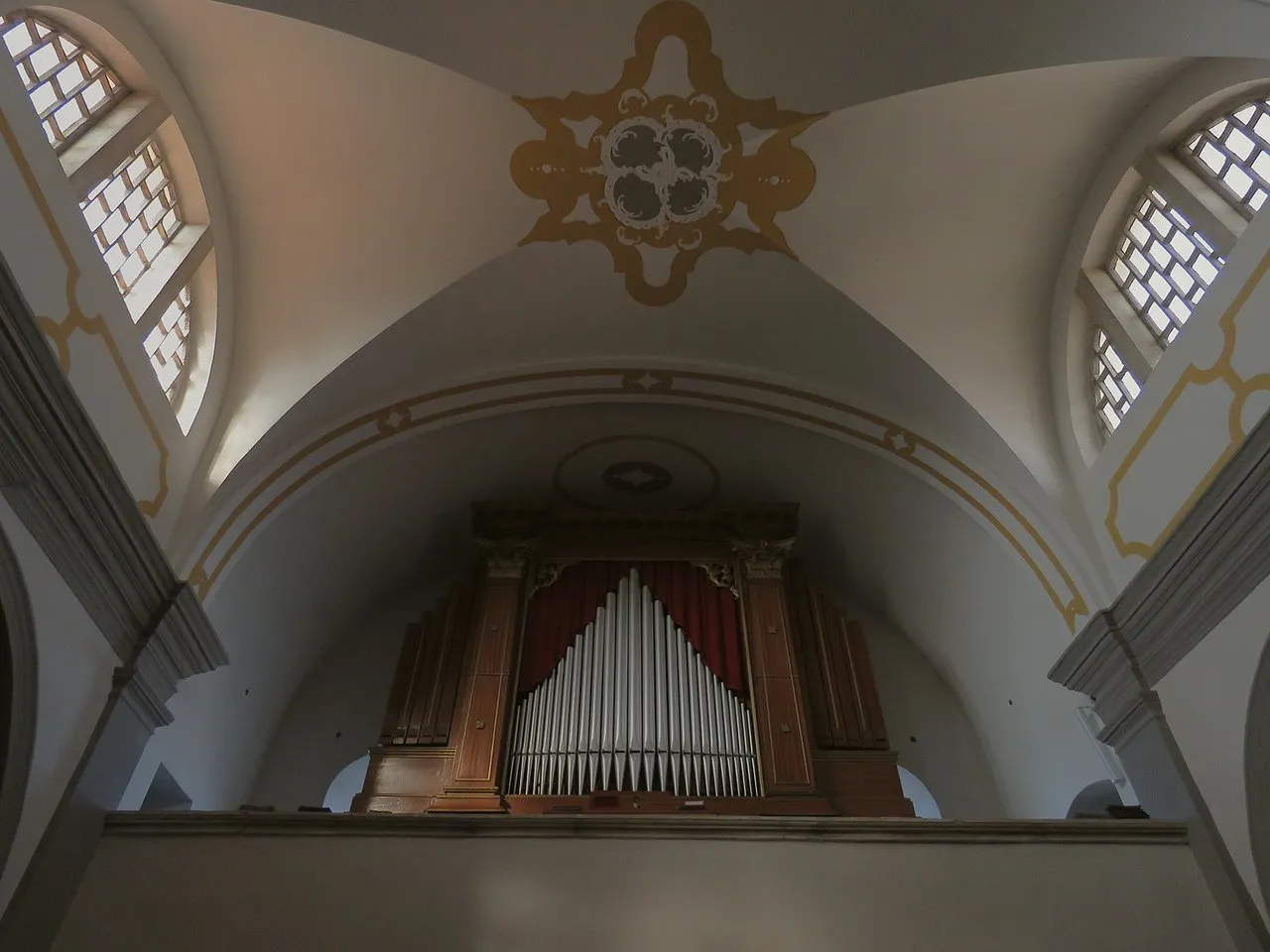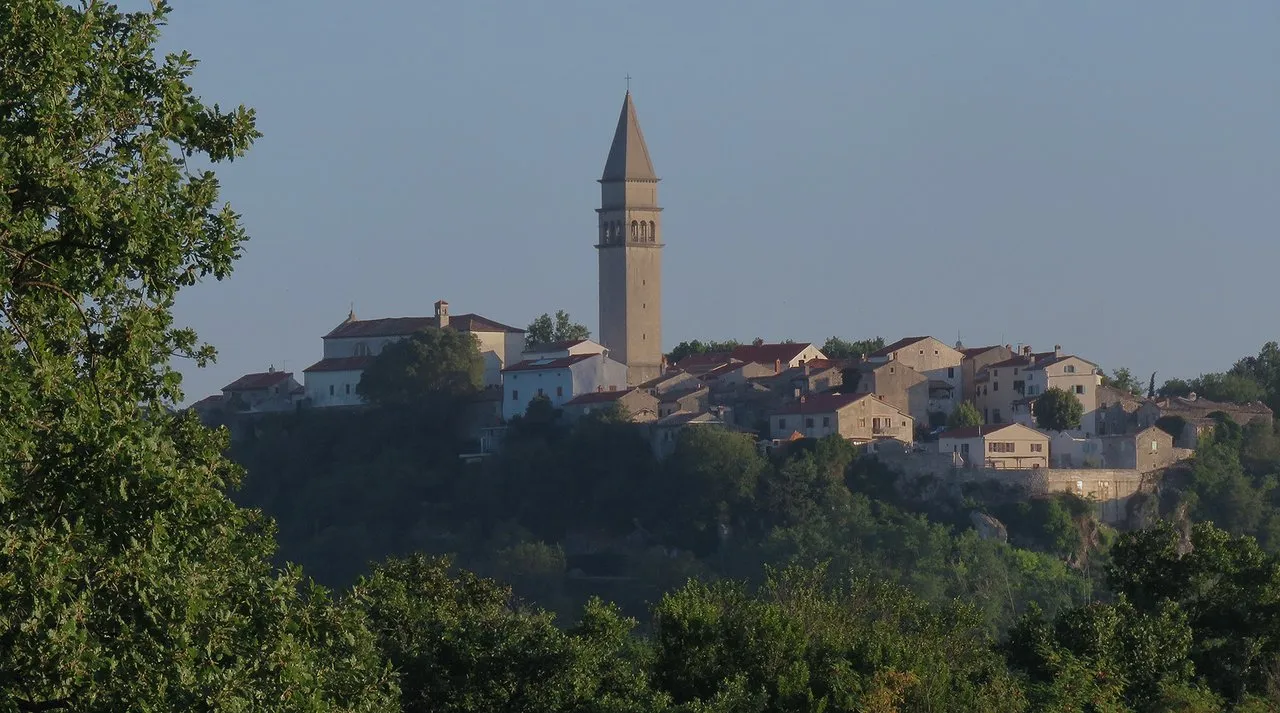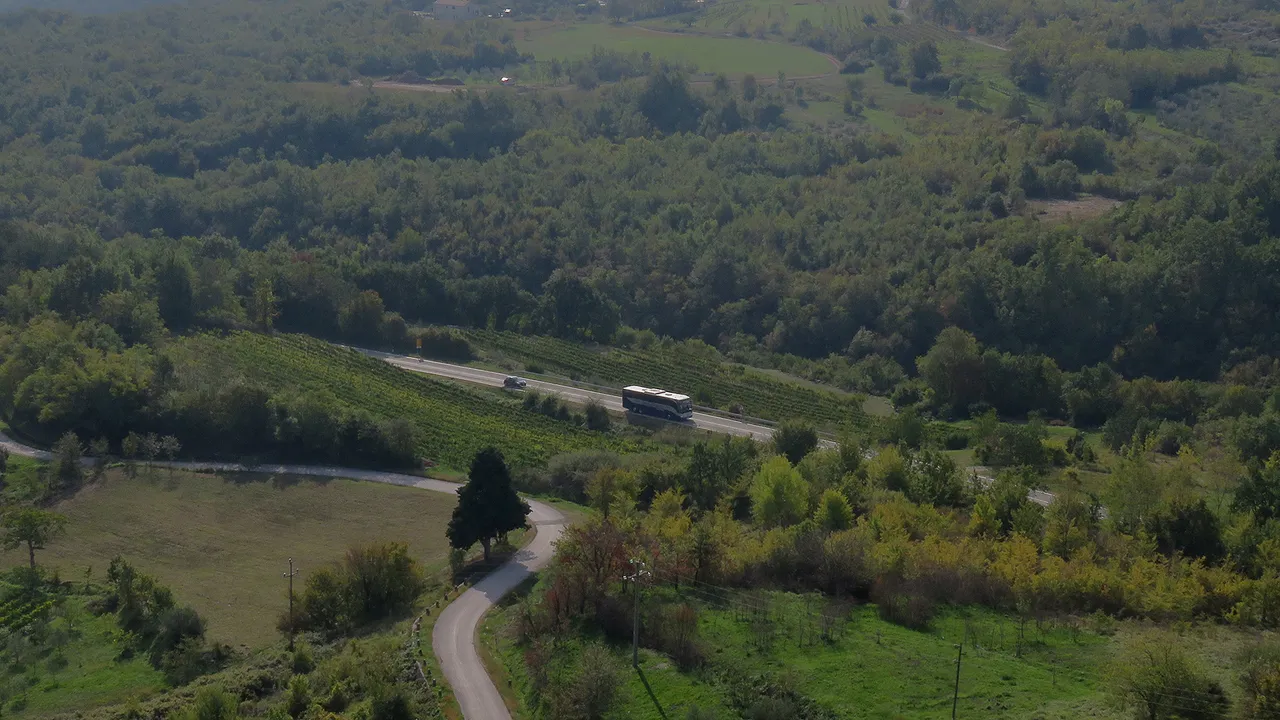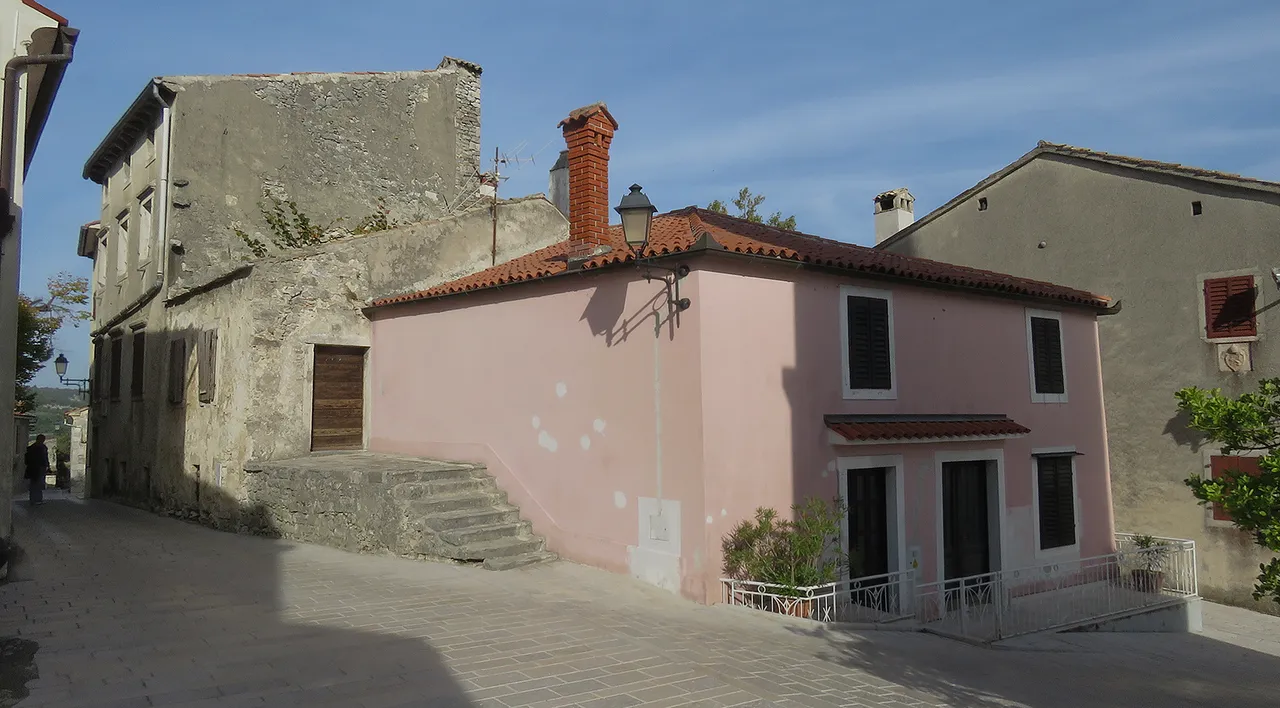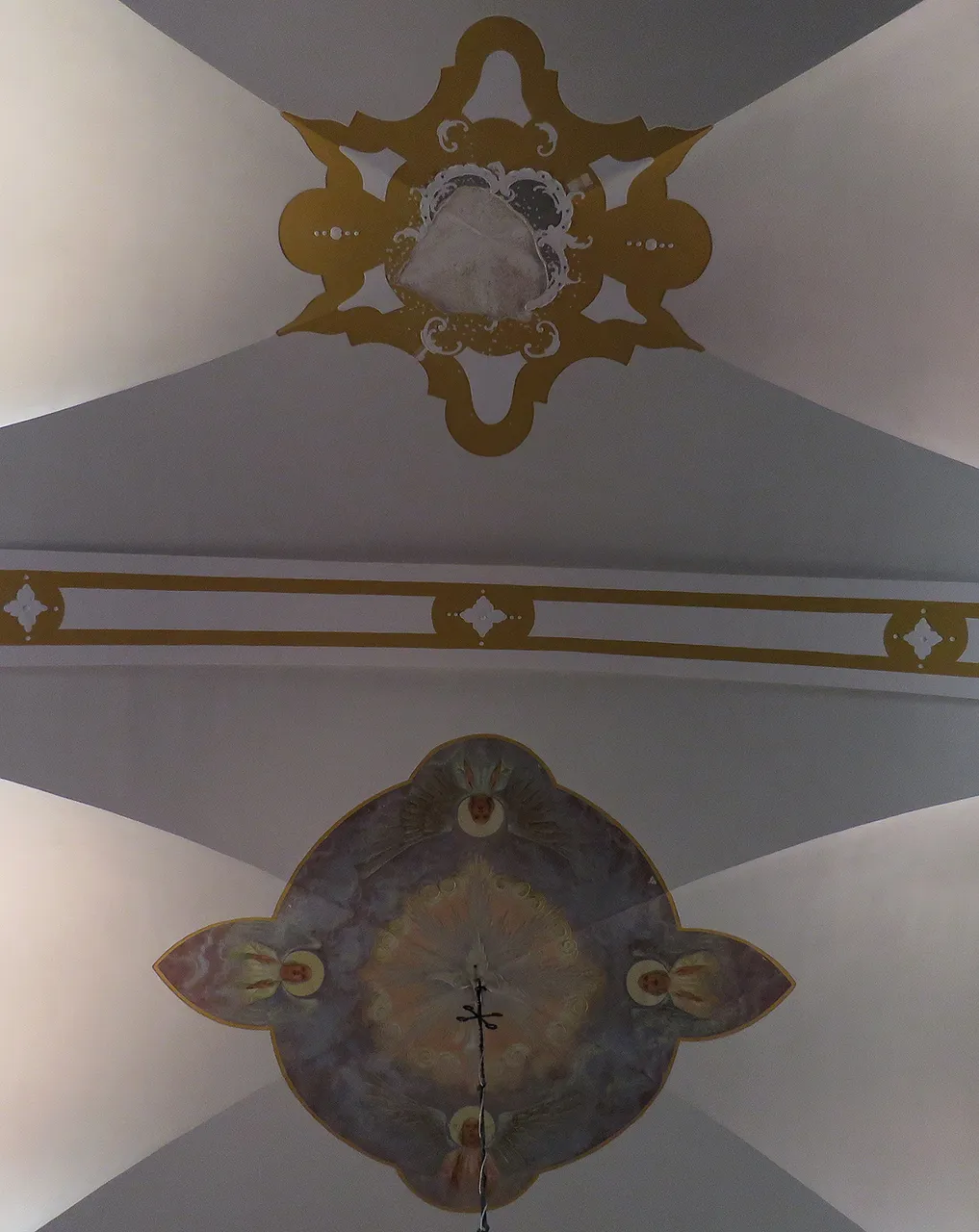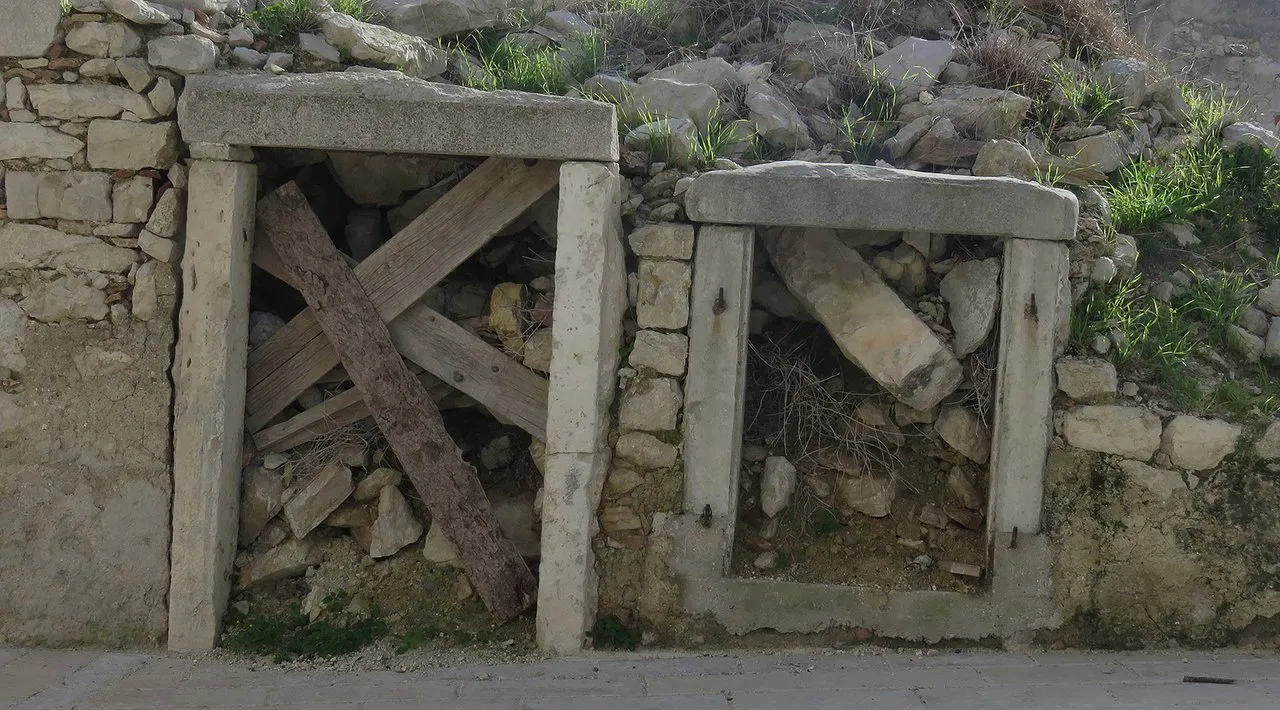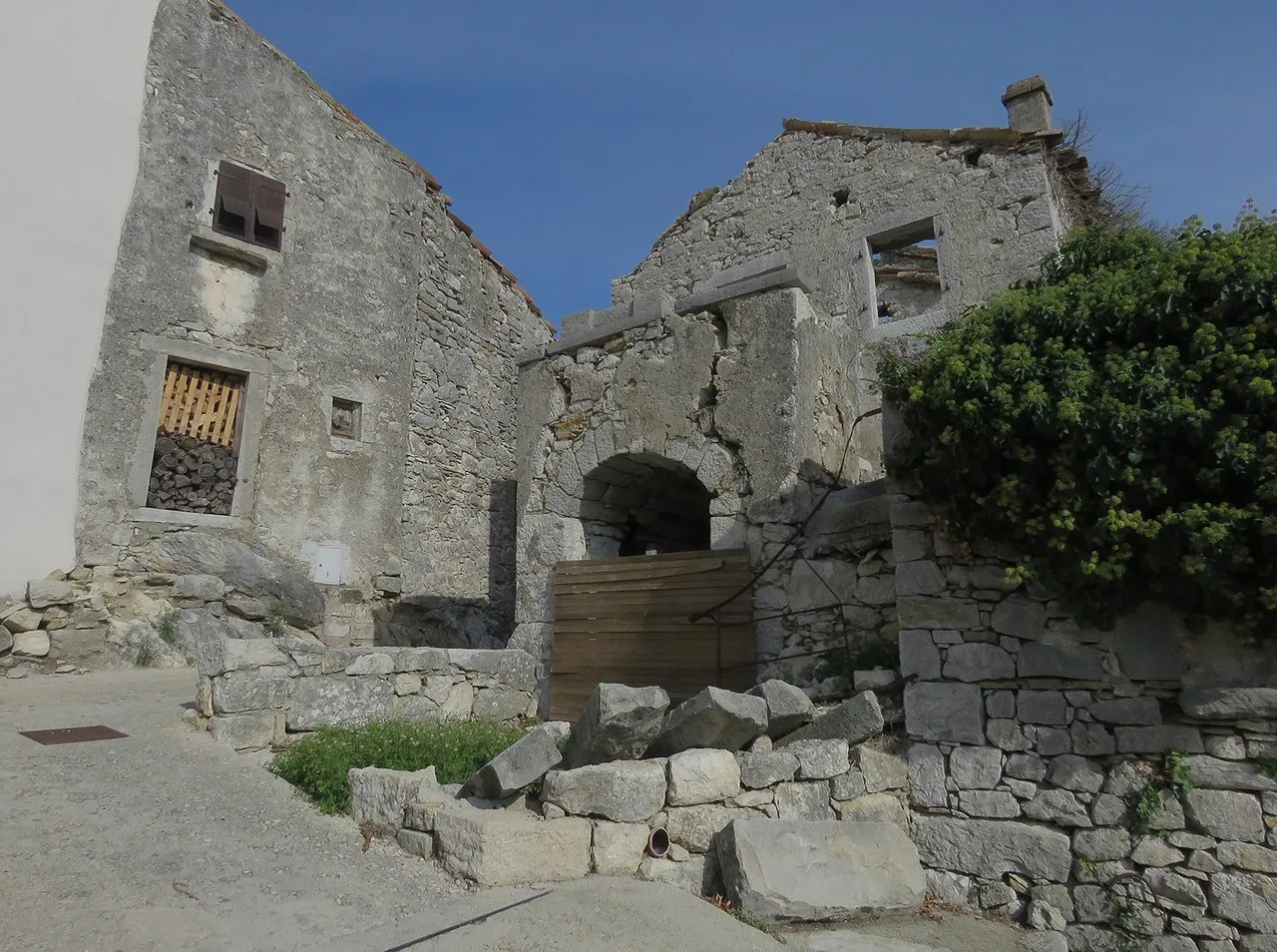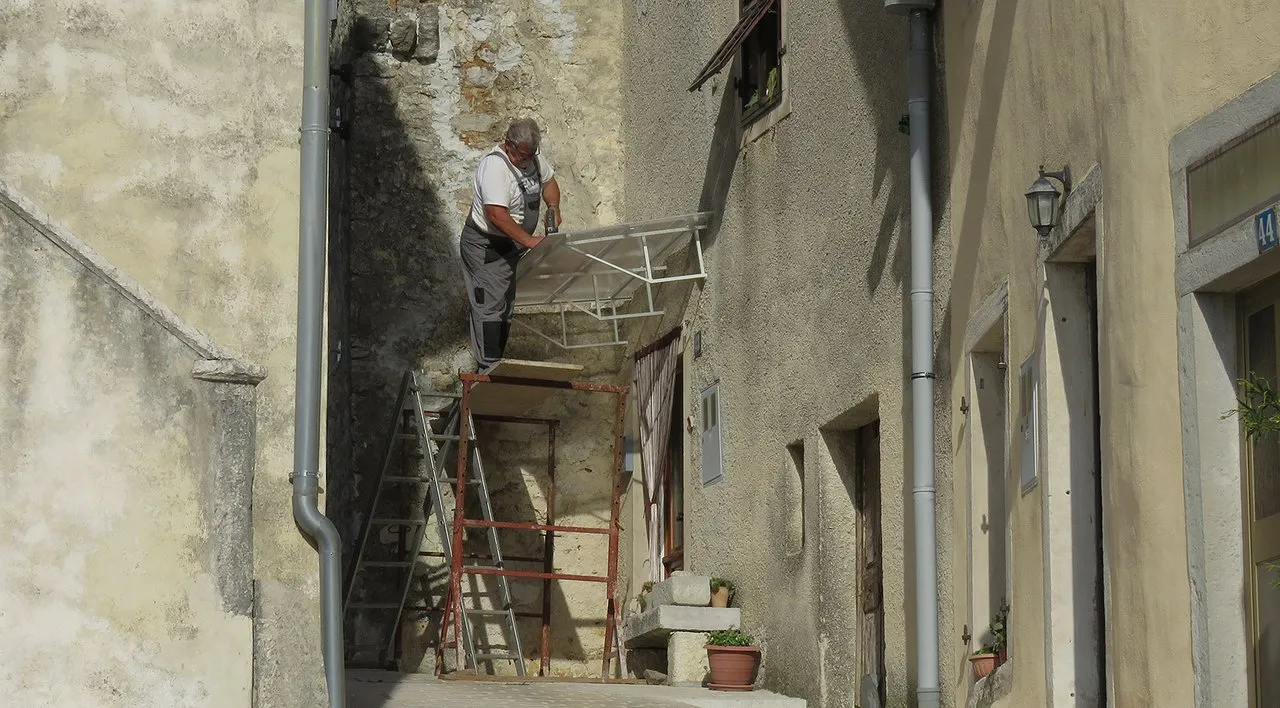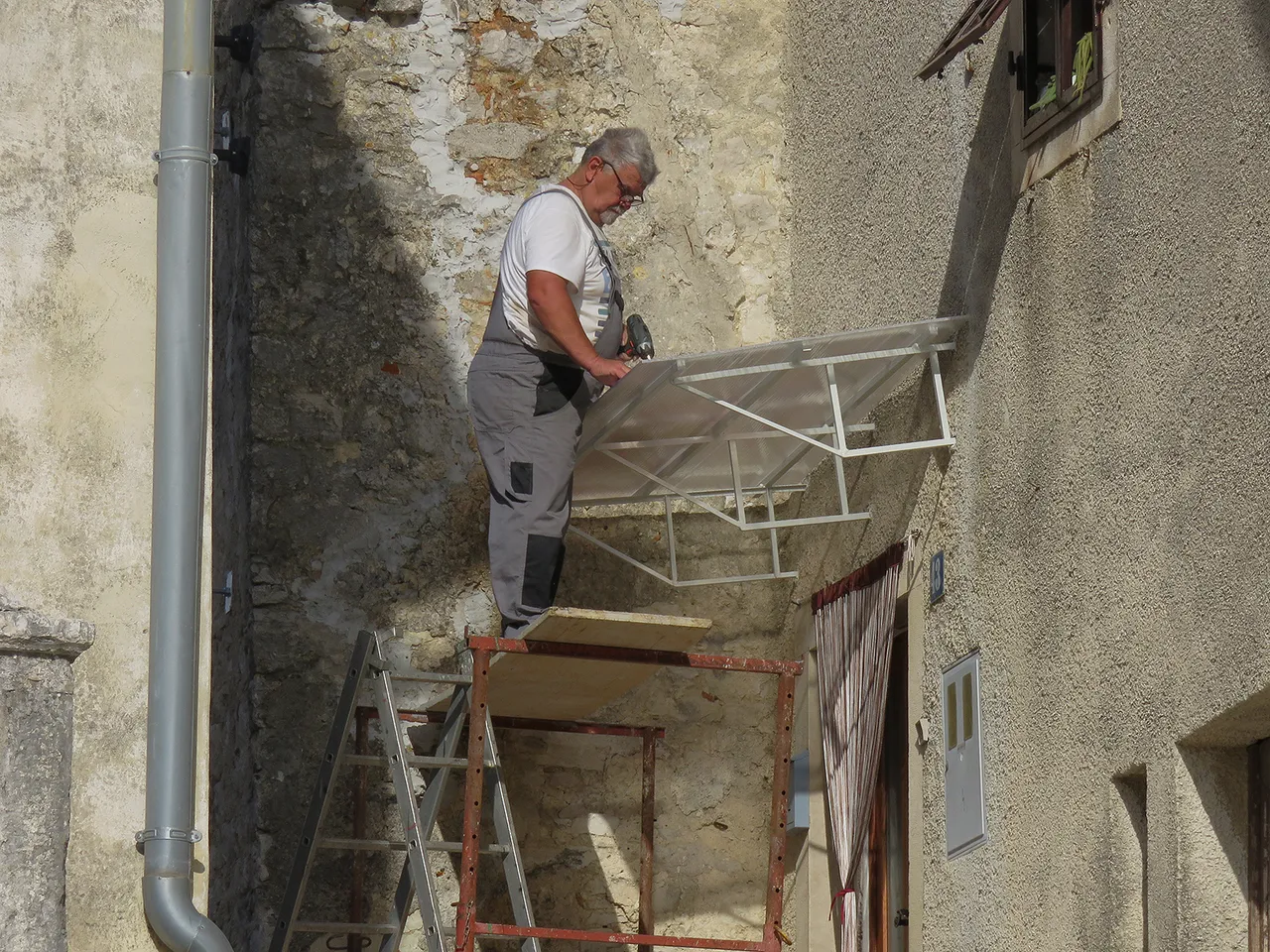I visited Pichan five or six times in the last few years and I photographed many aspects of the village on the top of one of the many hills in the central part of Istra, the peninsula on which southern cape I live, but ...
... but only once, on the 12th of October 2022, I had the opportunity to see and photograph the interior of the biggest church there.
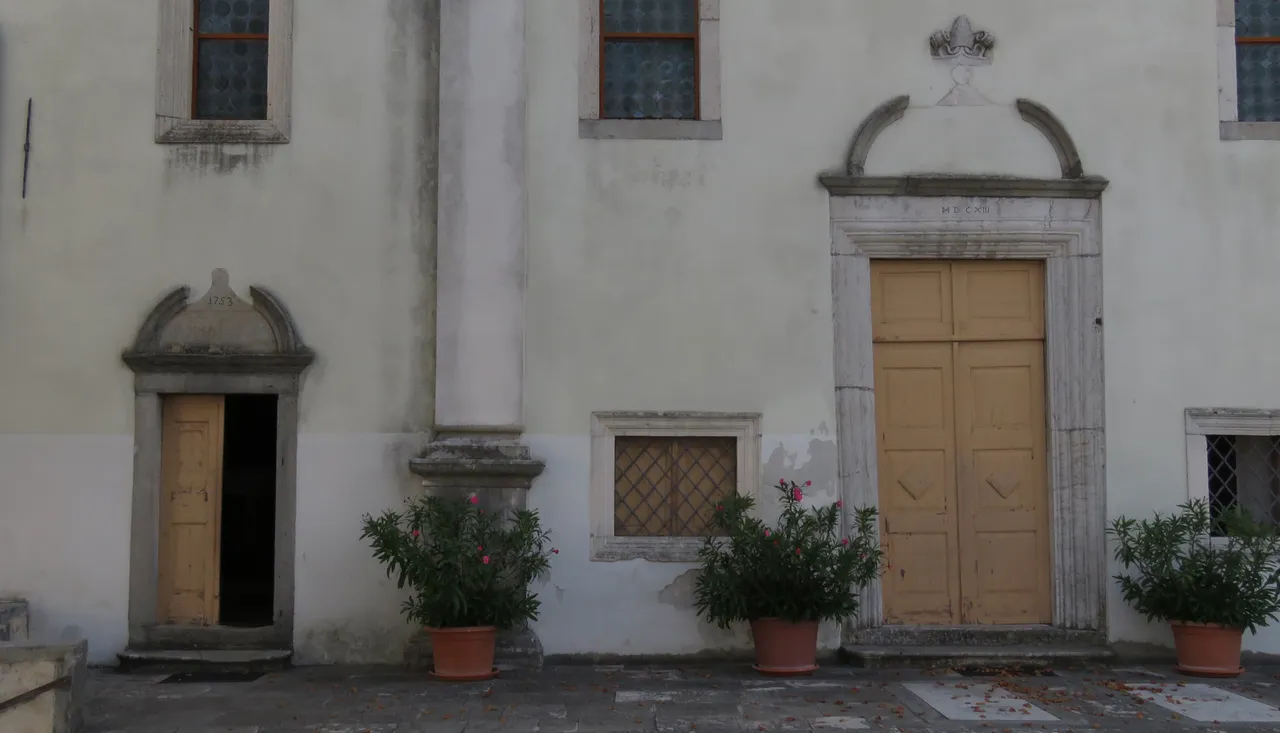
On that warm and sunny day, one of the three front doors, or more precisely, one of the two smaller front doors that lead to the aisles, was open ...
... so I entered. And, because of the abundance and elegance of the details on display, immediately felt inspired to explore the place through the lens of my camera.
Here you can see the back and one of the lateral facades of the building. The streets in Pichan are mostly narrow. There isn't much space for a scenic photograph that shows most if not all aspects of the building. When it comes to the population, only about three hundred people live there so the chance to see a crowd is pretty slim, but the buildings look kinda crowded in one place.
Here you can take a look at the neighborhood situated between the church and the medieval gate to Pichan, which was fortified back then and wasn't just a village but a strategically important small town. Important for this territory, of course, the Istrian peninsula, it wasn't that big and important to be significant for the larger region.
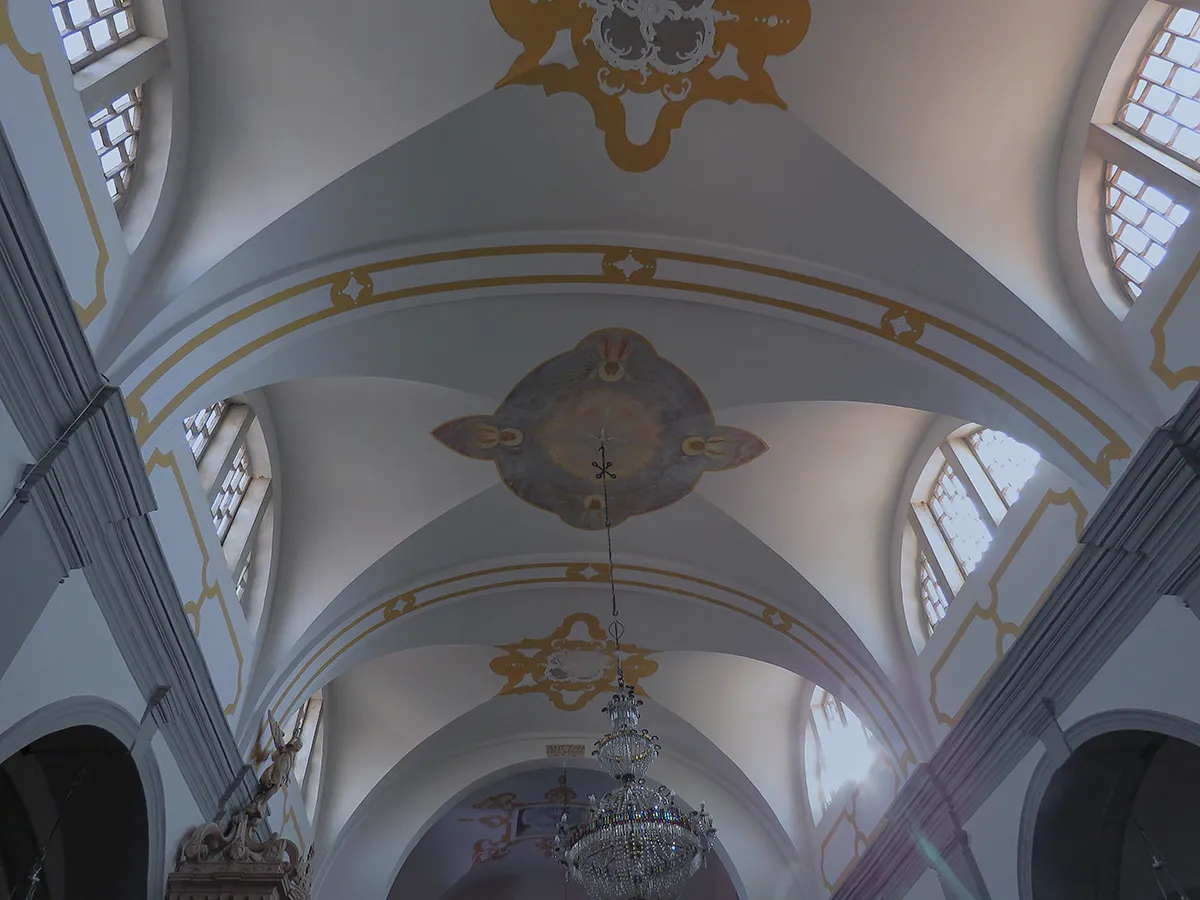
The Parish Church of the Annunciation of the Blessed Virgin Mary as we can see it today was built on the foundation of a small church that dates from the 14th century, and it was a cathedral for most of its existence. Just like the village was a town before, this wasn't just a parish church but a cathedral.
The construction work started under the administration of bishop Antonio Zara and in the period from 1608 to 1613, the small, older church I mentioned before, was turned into a cathedral.
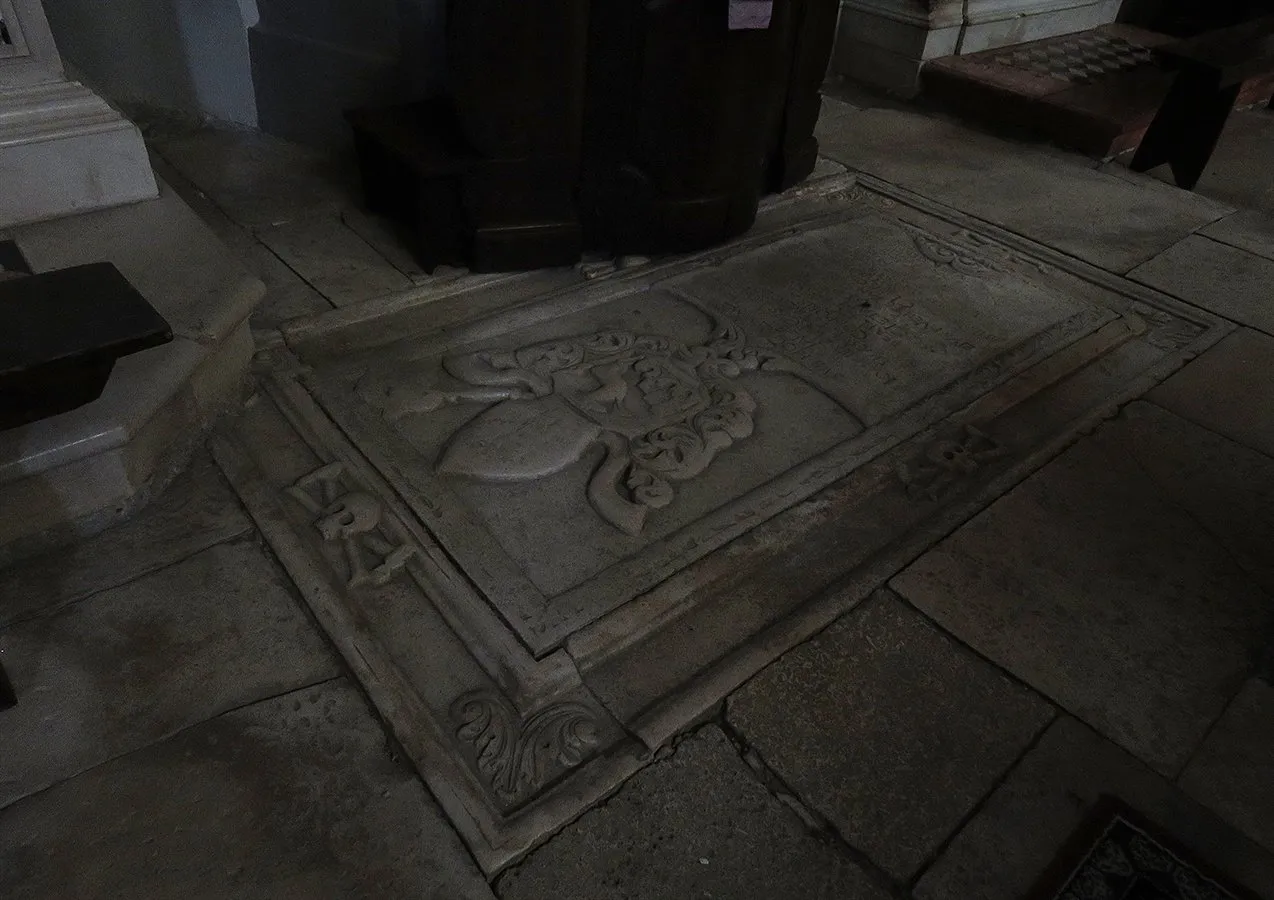
Antonio Zara died on the 30th of December 1621 (If I had to guess, I'll say that the bishop died on a gloomy day with plenty of mist in the morning), and was buried inside the cathedral. I'm not sure if you are looking exactly at his final resting place in this photograph because according to what I found on the Internet, at least one more bishop was buried inside the building, but is possible. The probability is fairly high. I mean, that's a tombstone down on the floor. That much I'm sure of.
One cool thing about writing these posts on Hive is that it pushes me to learn stuff that I wouldn't have learned otherwise. In this case, for example, I found out that the aforementioned bishop, Antonio Zara, was a philosopher who wrote a philosophical encyclopedia interestingly titled "Anatomia ingeniorum et scientiarum sectionibus quattuor comprehensa". After a quick Internet translation, I can tell you that in English, that means, more or less, "Anatomy of the intellect and knowledge, comprised in four sections". The work was written in Pichan and it was finished and published in 1615.
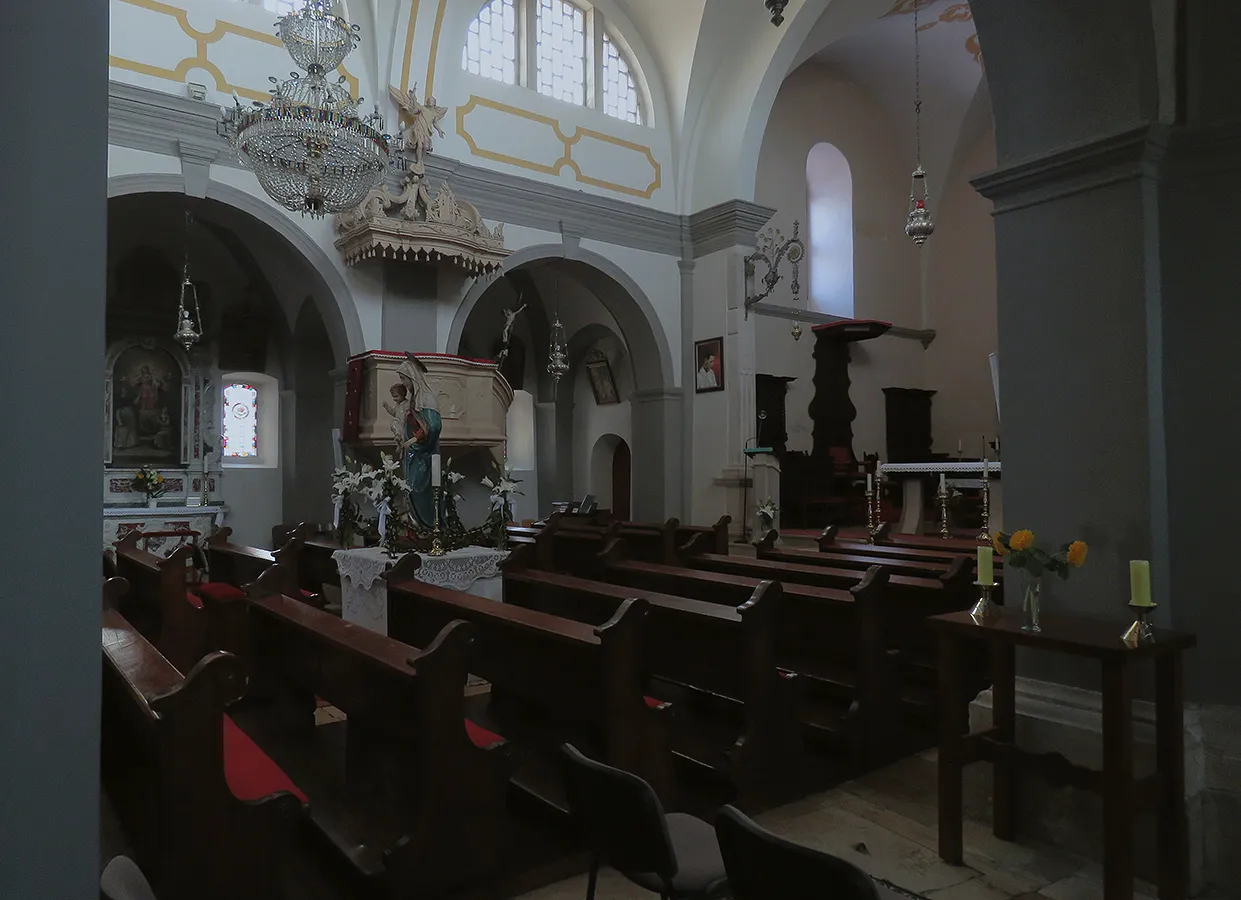
The cathedral started its career as a piece of renaissance architecture, but ...
... but under the administration of bishop Aldrago Antonio de Piccardi that was stationed in Pichan till 1784, its interior was changed into a baroque ambiance ...

... that can still be experienced nowadays. If you take a good look at the details shown in this photograph, you'll probably notice the organ in the gallery above the main entrance.
The former cathedral got its first organ in the period between 1637 and 1646 ...
... during the administration of the bishop called Antonio Marenzi. Can't tell you how old is the instrument that you looking at. Haven't found reliable information on the Internet.

There is more to see inside the church, but now, I would like to break the thread of its story and show you some outdoor shots ...
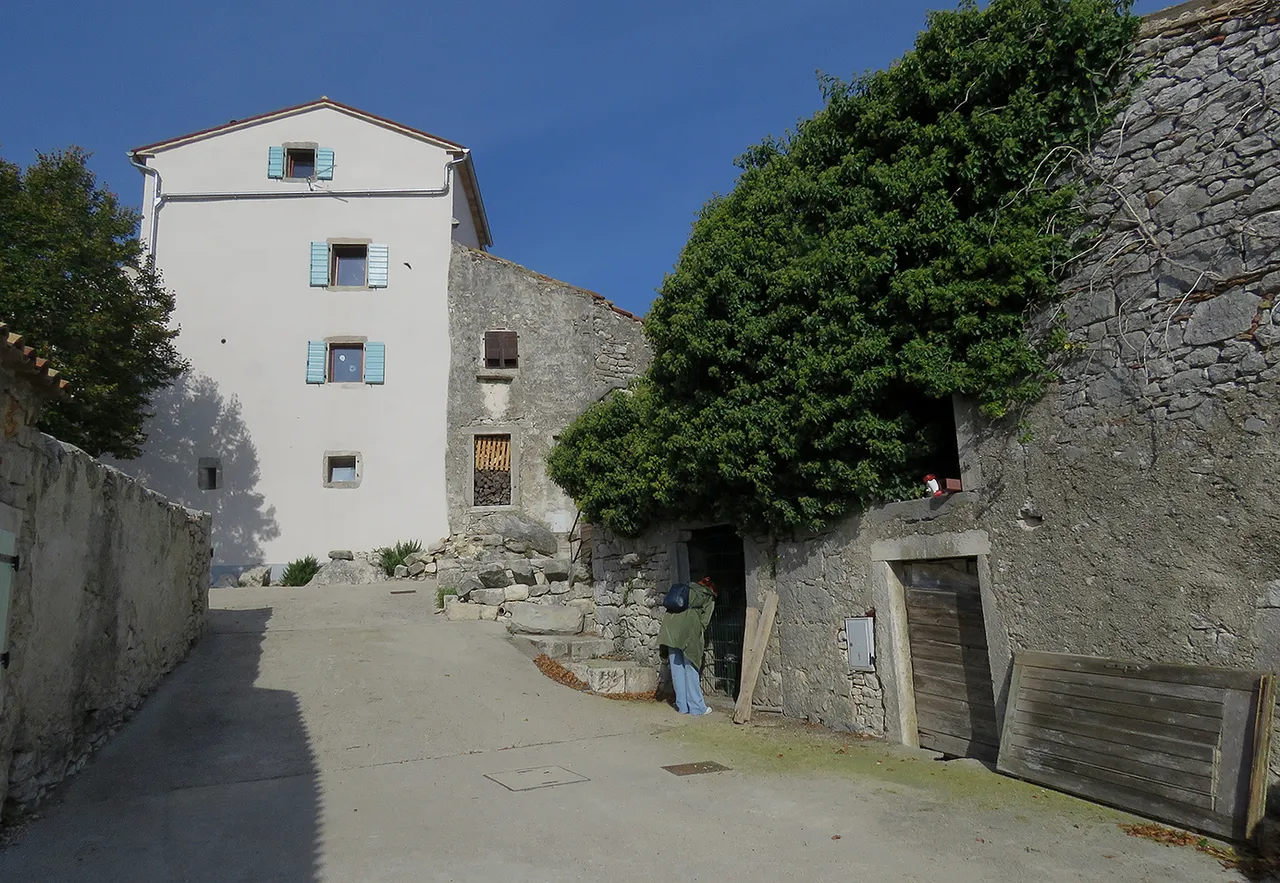
... taken all around the village.
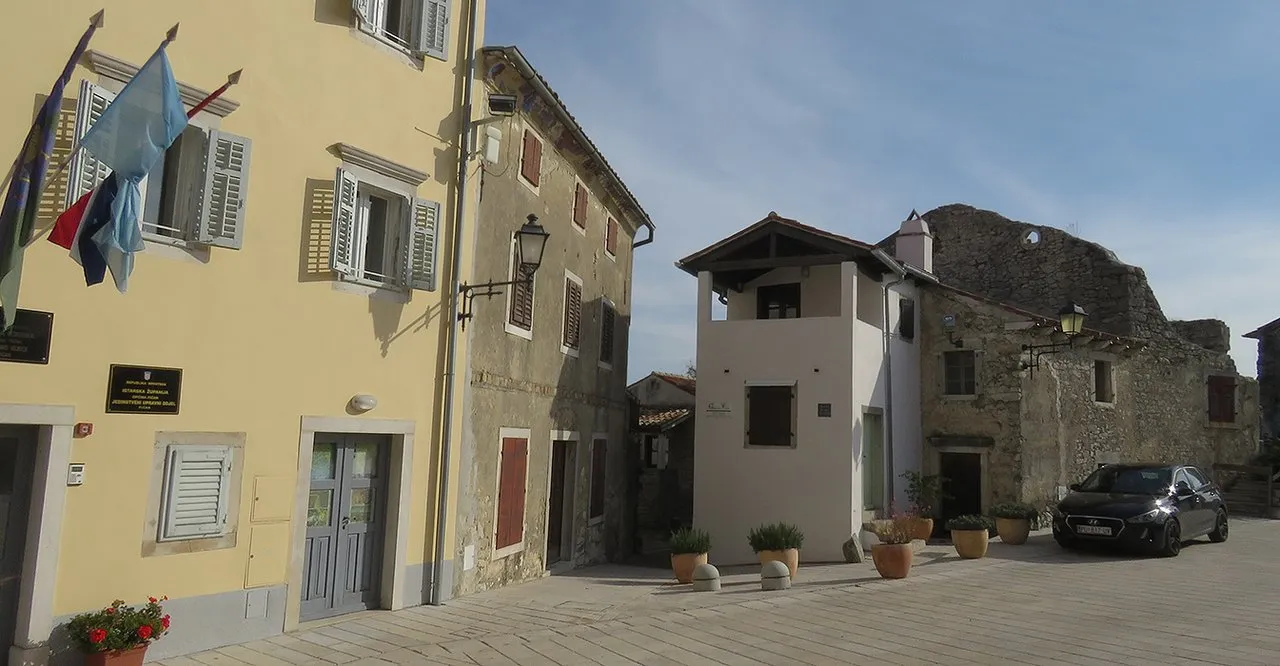
Here you can take a look at some buildings around one of the two relatively large squares in Pichan. One of those squares is in front of The Parish Church of the Annunciation of the Blessed Virgin Mary, the other is behind it. The one shown in this photograph is situated behind the church. The church tower is also situated there, relatively far from the church. In the following photograph ...
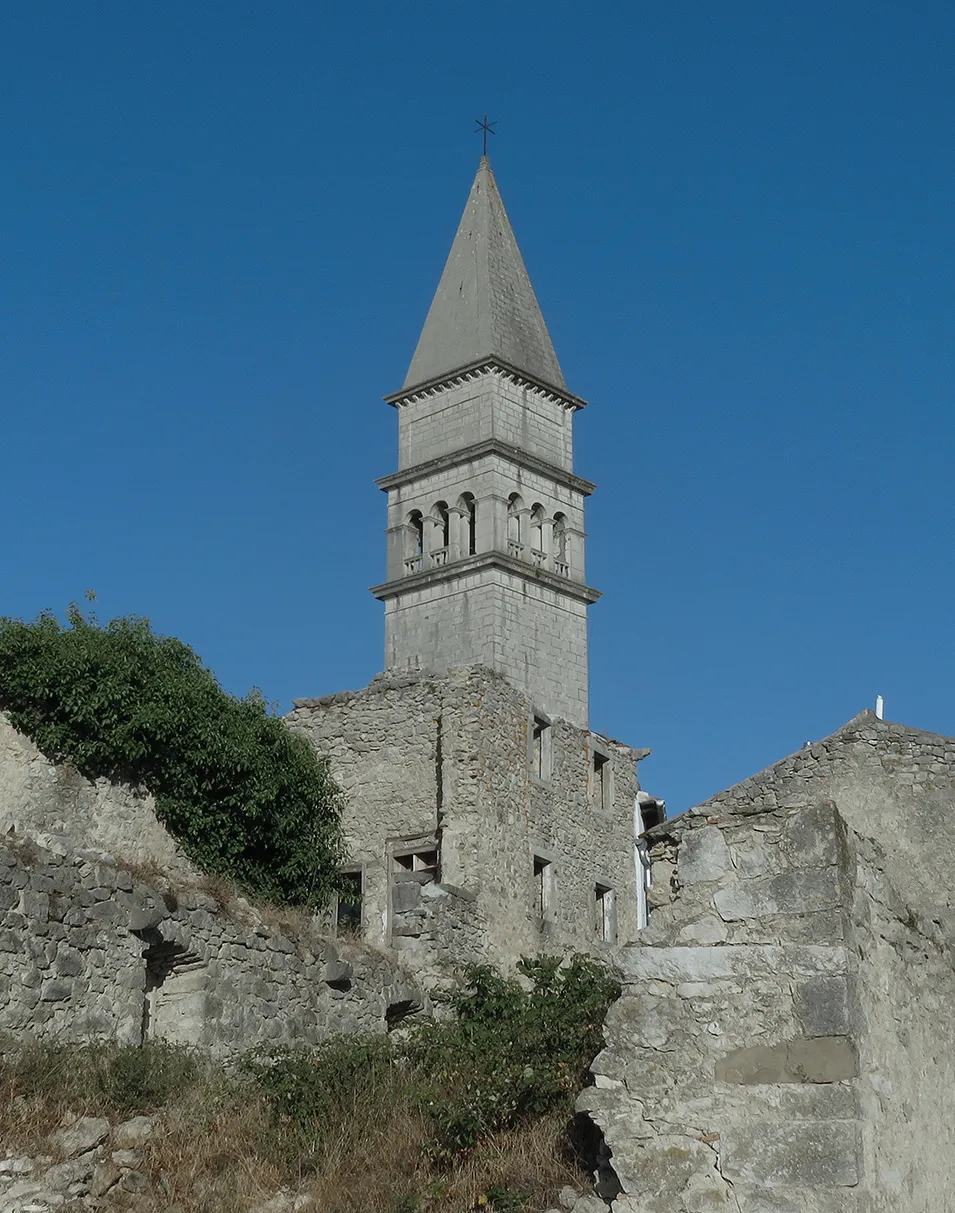
... you can take a good look at the good-looking tower. It was built in 1872 and is 48 meters tall. Only two church towers on the peninsula, in Vodnjan and Rovinj, are taller. They are both around 60 meters tall. I mean, in Vodnjan 60 meters exactly, and 59 in Rovinj.
To get this photograph, I stopped by the side of the road a couple of kilometers from Pichan. Here you can admire the urban layout of an old medieval town that is only a village now. Pichan is situated on the top of the hill ...
... so the view from there is great.
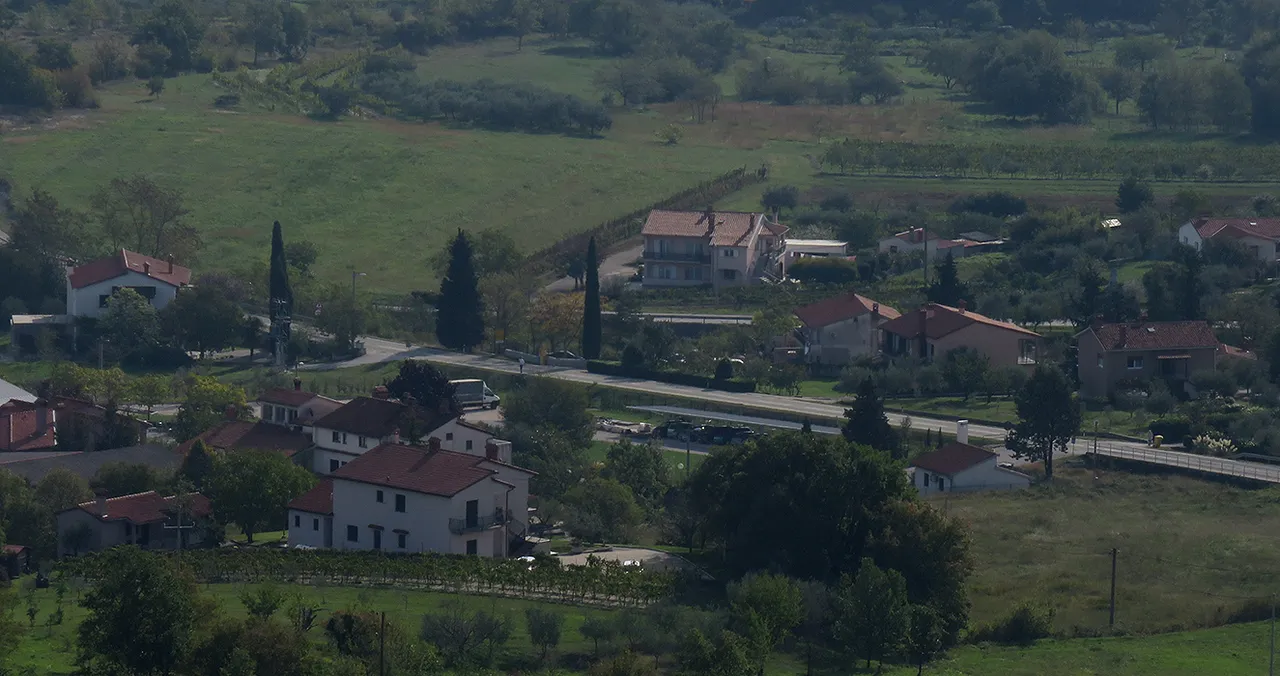
The hill isn't very tall but is tall enough to be a nice lookout point.
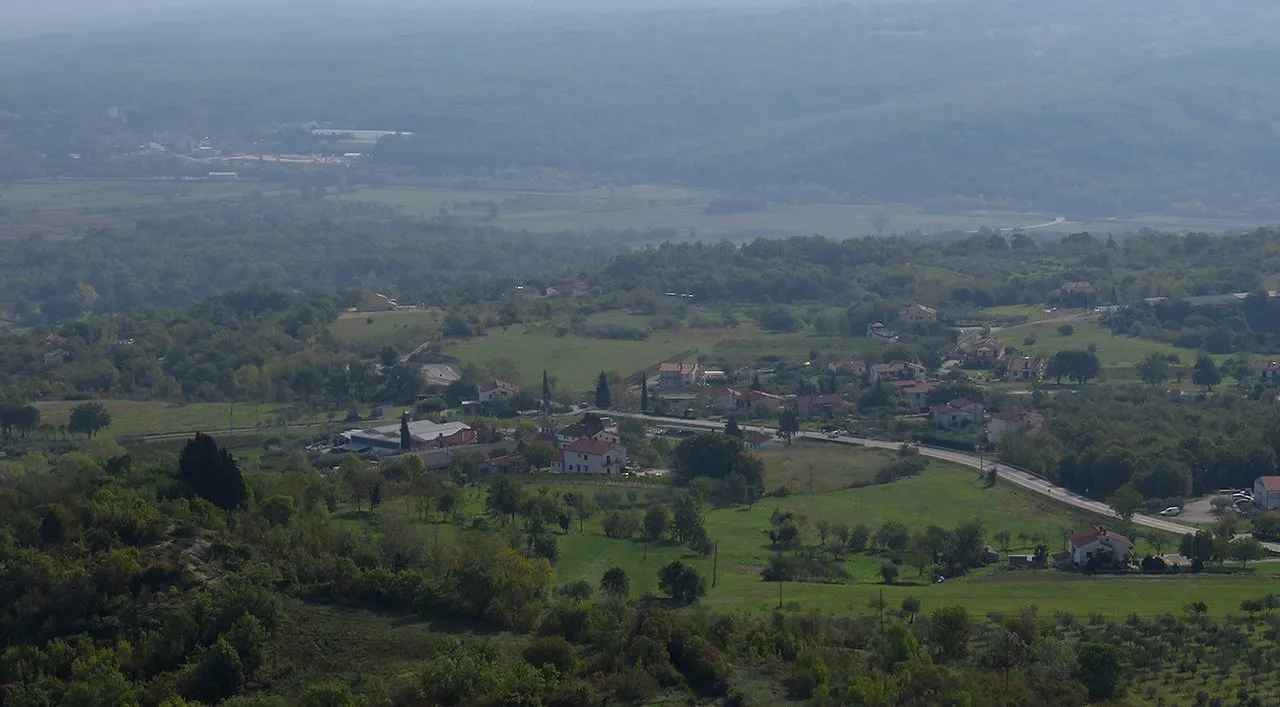
Here you can take a good look at the layout of the smaller villages and scattered properties down in the valley.

There is a factory not far from Pichan, also there in the valley. It produces insulation materials for the construction industry. Rock wool is its main product, I think. ROCKWOOL Adriatic d.o.o. is the name of the firm that manages the factory, so ... I'll say that, yeah, the place is mostly about rock wool.
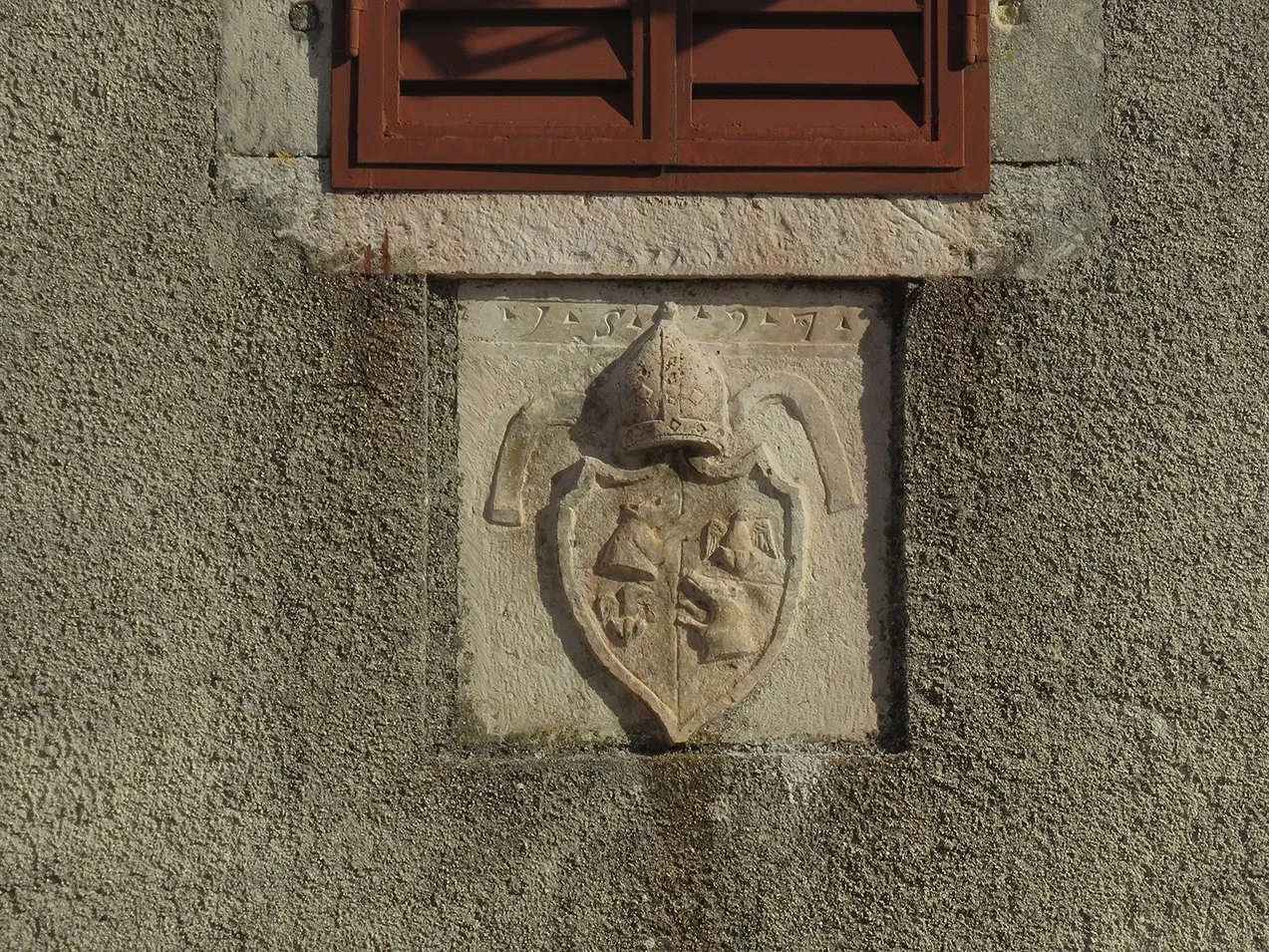
Here you can see a heraldic symbol engraved in stone ...
... that can be seen on the facade of one of the houses near the former cathedral.
If you enlarge this photograph by clicking on it, you'll notice a man that was a few steps far from entering the church. I used the same entrance to go in. I mean, only that one was open. In the following photograph ...

... you can virtually experience (well, kind of) my first impact with the building's interior. That was the first shot I took when my eyes got used to the gloom.

The stained glass windows looked great from the inside.
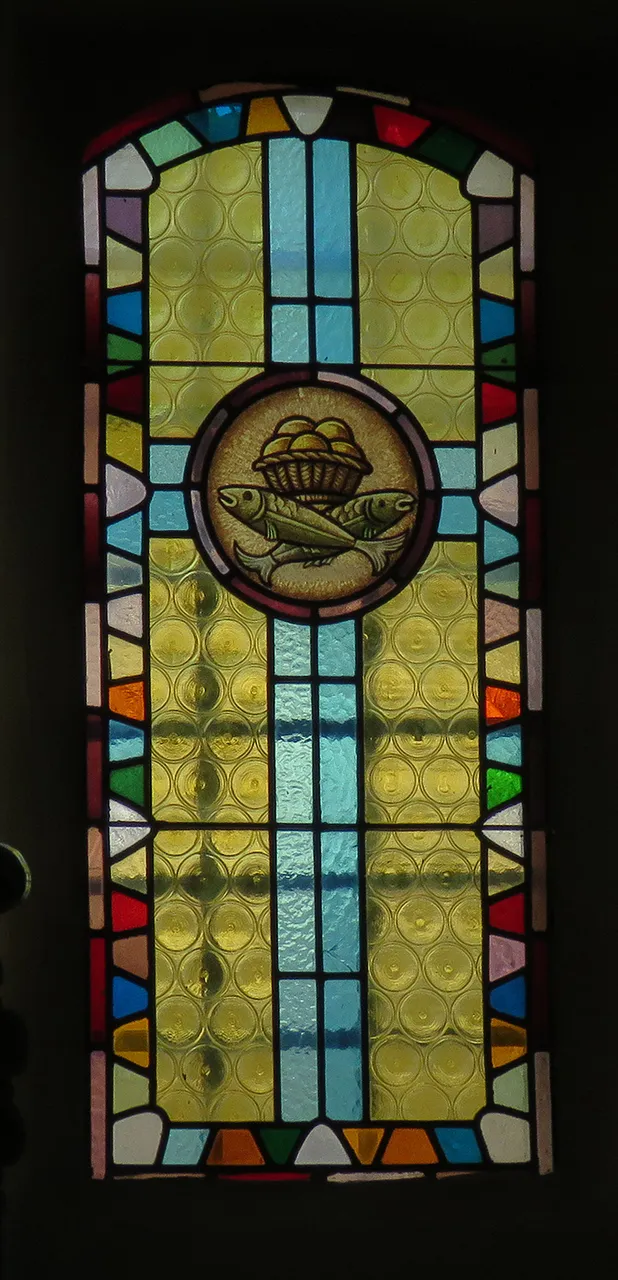
Judging by their look, I'll say that they are added recently. I mean, relatively recently. The yellow circles look very much like circles on my room's door that are in my house since the mid-eighties or something like that.
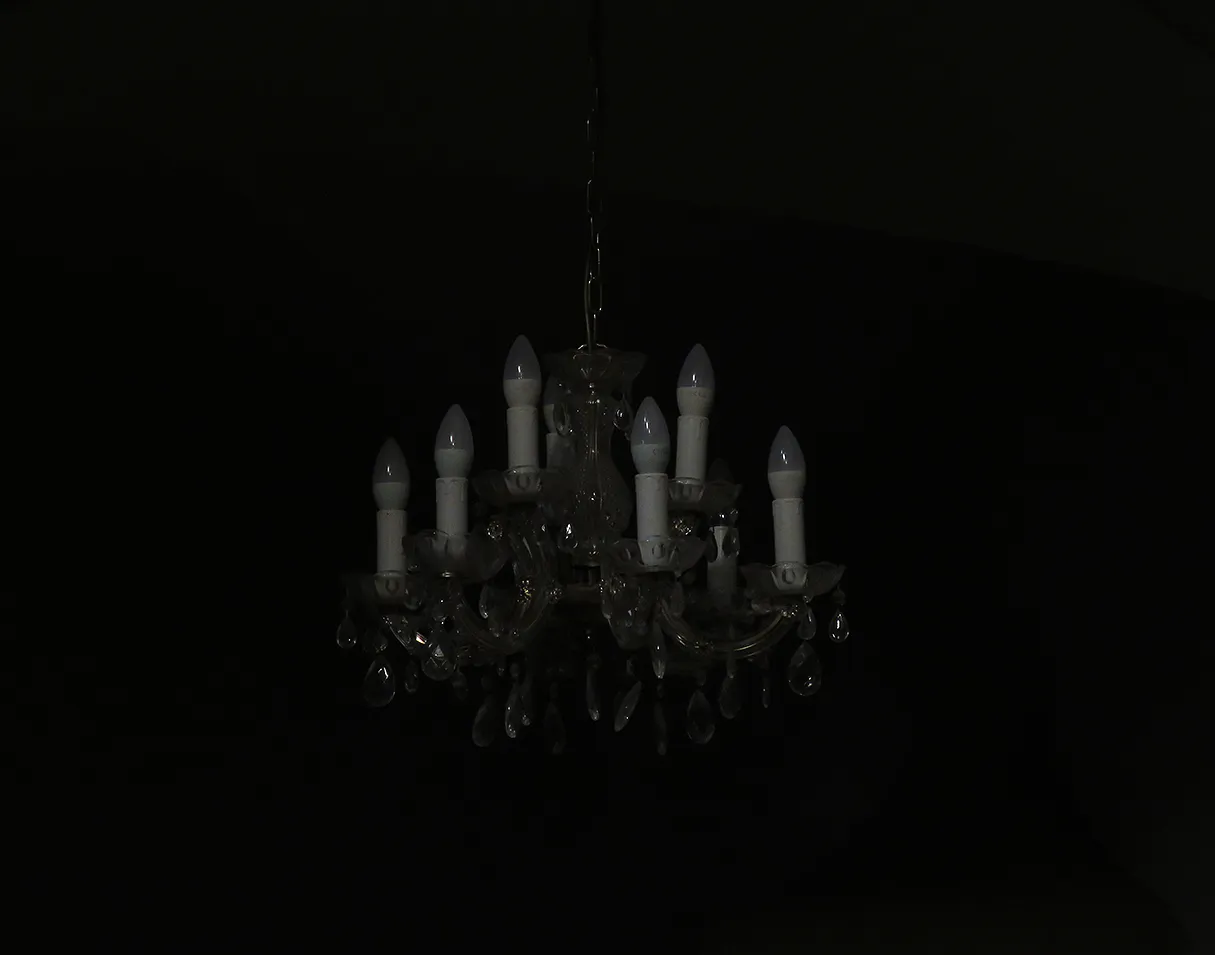
This chandelier also looked very good against the dark background.
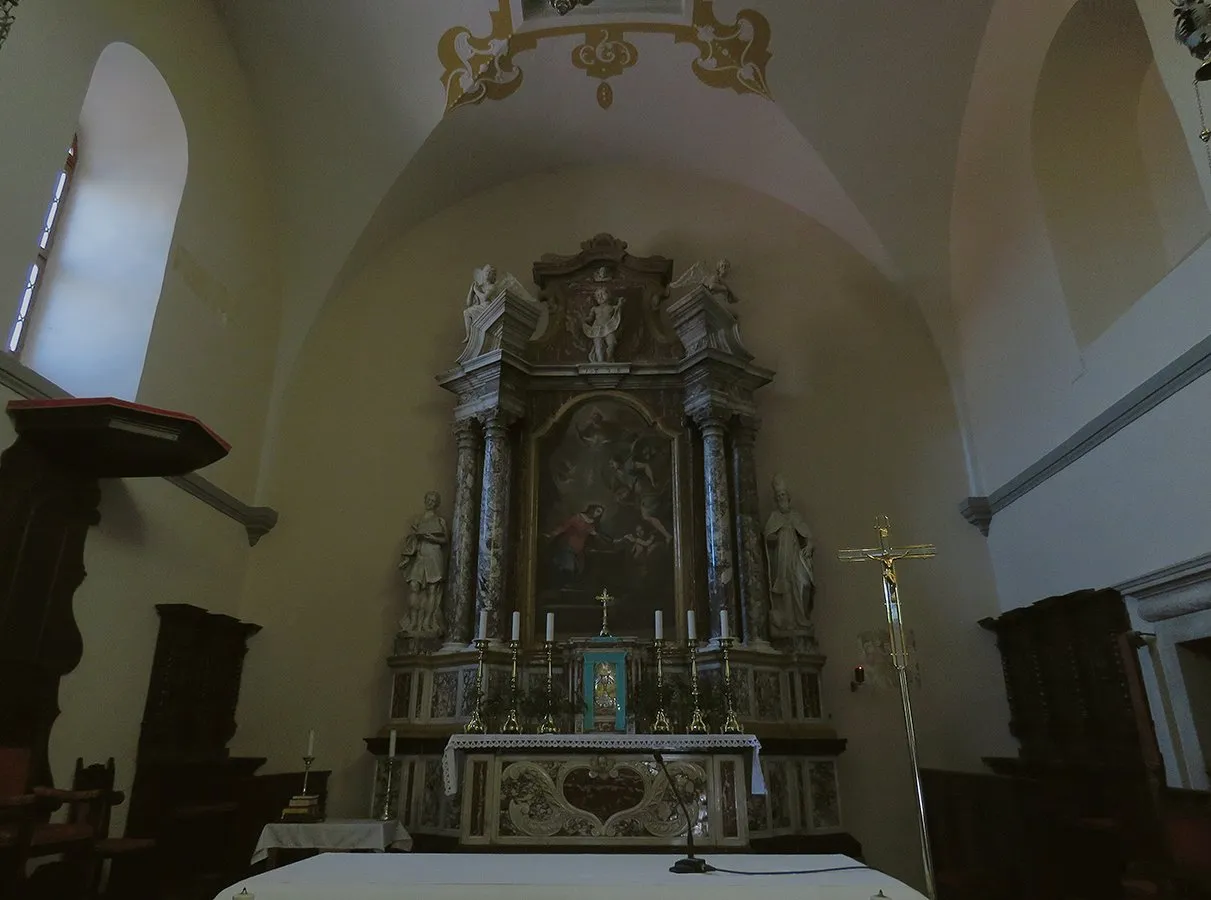
Here you can see the main altar. Its wooden choir, the part in touch with the wall, is a renaissance artifact considerably older than the rest. The painting in the center of the choir was added in 1738 and is a work of Valentin Metzinger, a Slovenian artist of French origin. In the following photograph ...
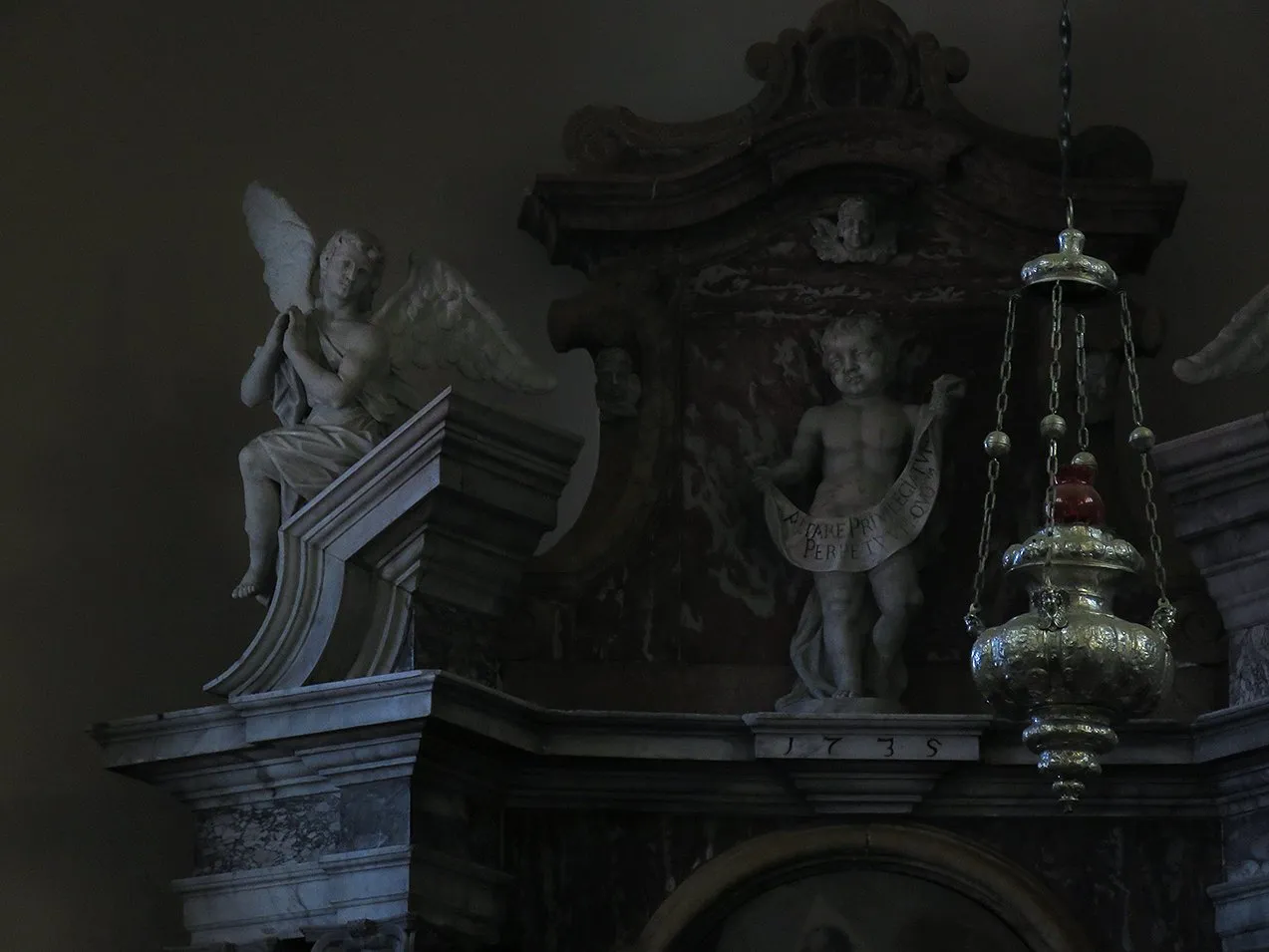
... you can take a better, more up-close look at the angelic details on the top of the altar.
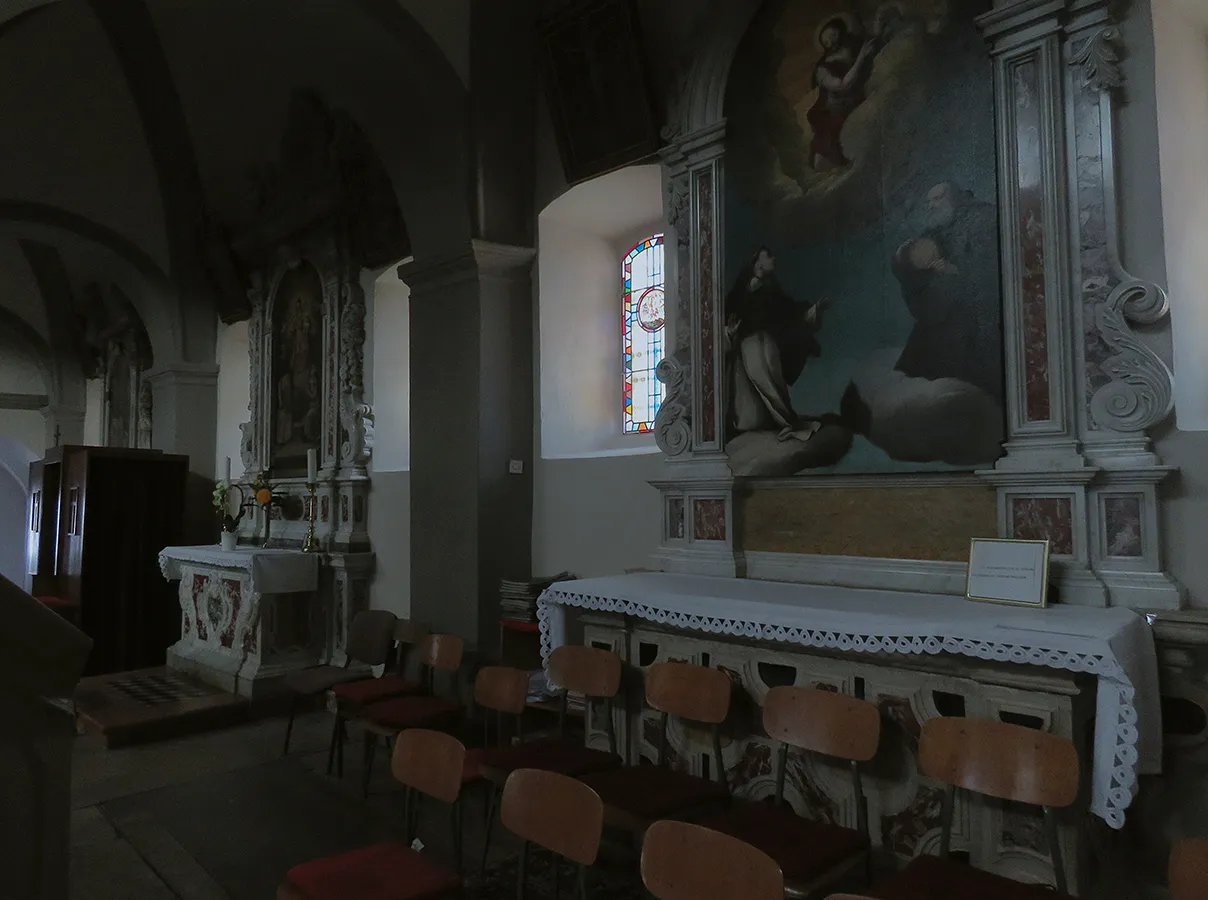
In the foreground of this photograph which shows one of the two lateral aisles of the building, you can see another painting. Can't tell you anything about this one. When it comes to the church's interior, the scattered pieces of information I was able to find on the Internet don't cover much. While I was standing there, thinking about a photograph that soon will be taken ...
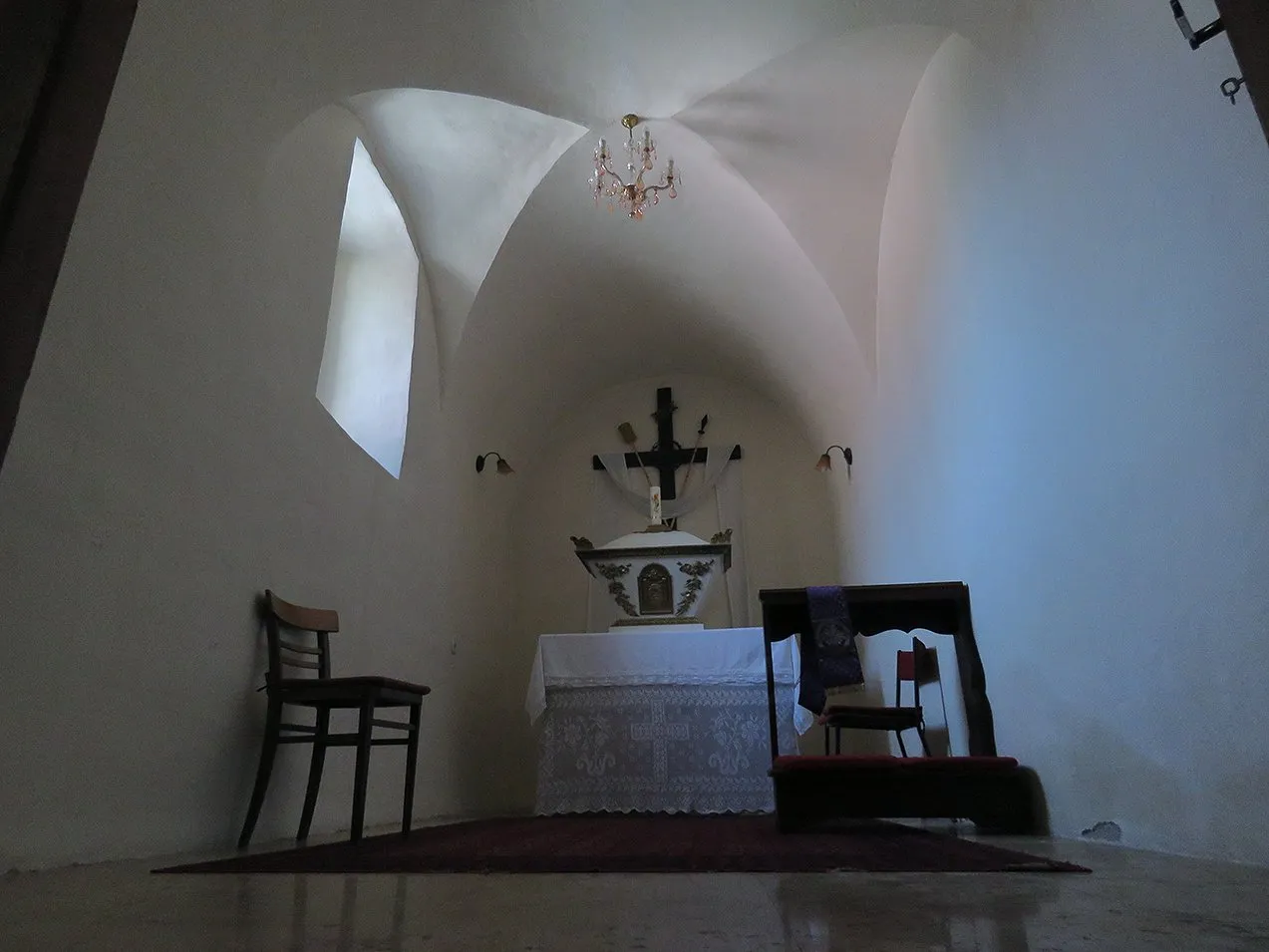
... there was this interesting space behind me. An apsidal chapel with an ornate casket in it.
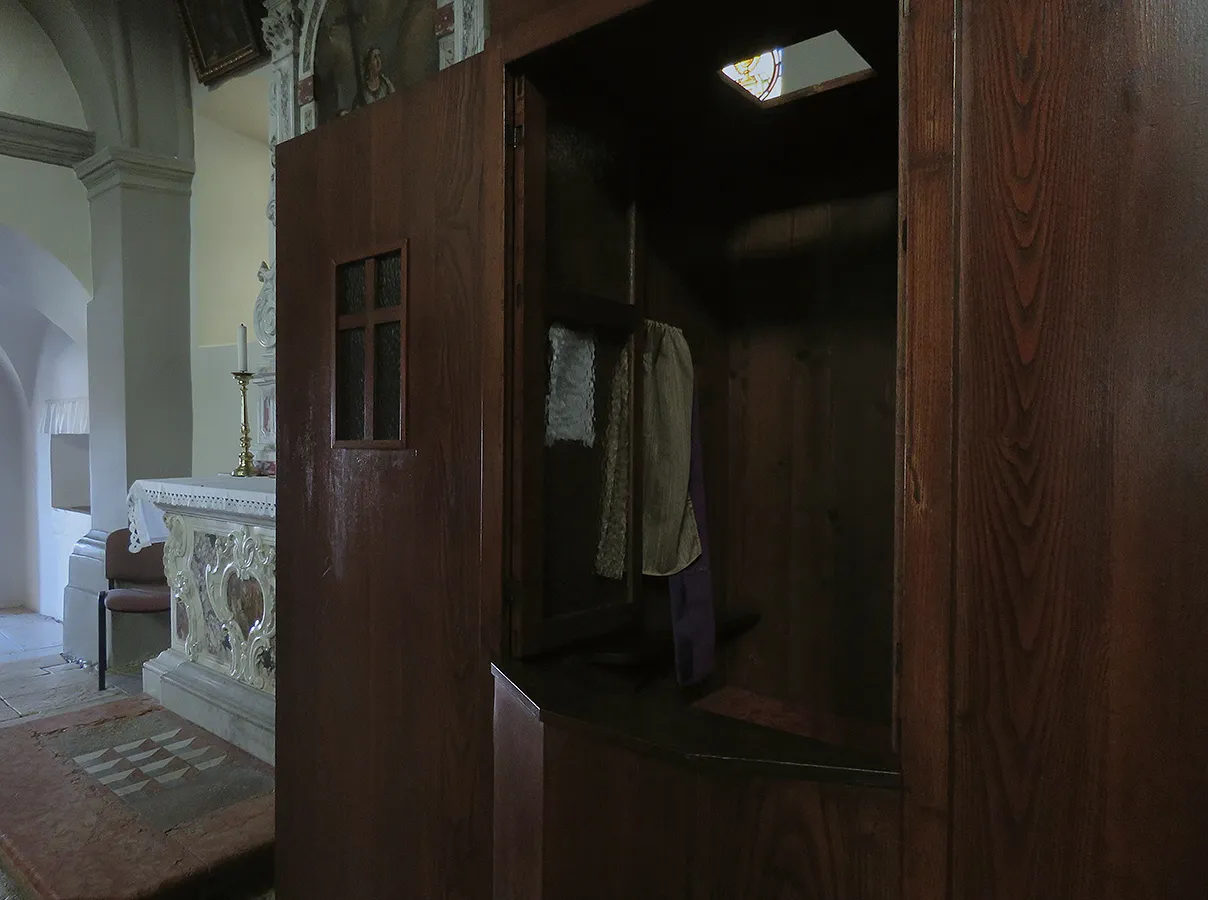
A bit further down the same aisle, closer to one of the entrances, I stopped to photograph the wooden confessional. In the following two photographs ...
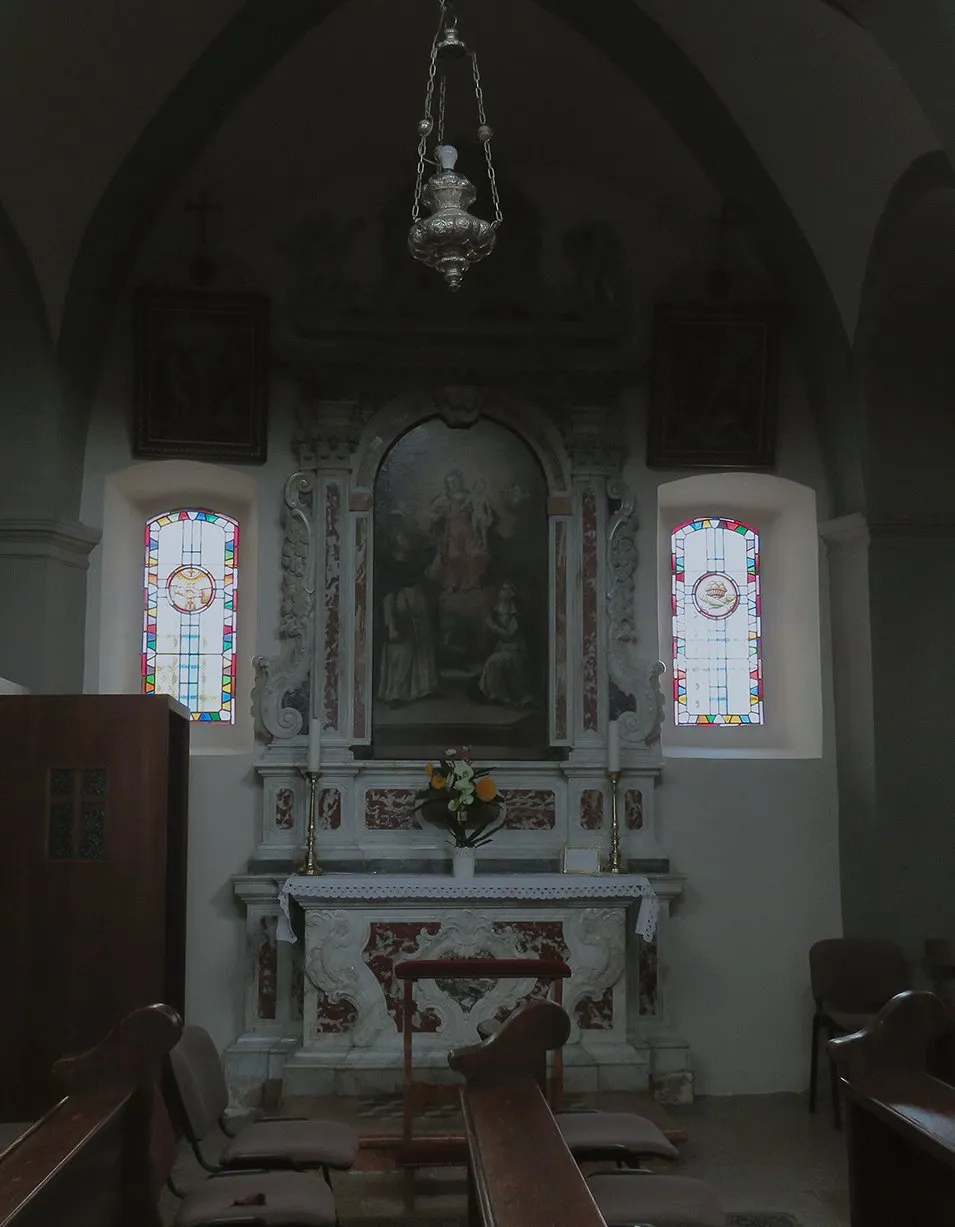
... you can take a look at the paintings and ornamental structures in the aisle on the opposite side of the nave.
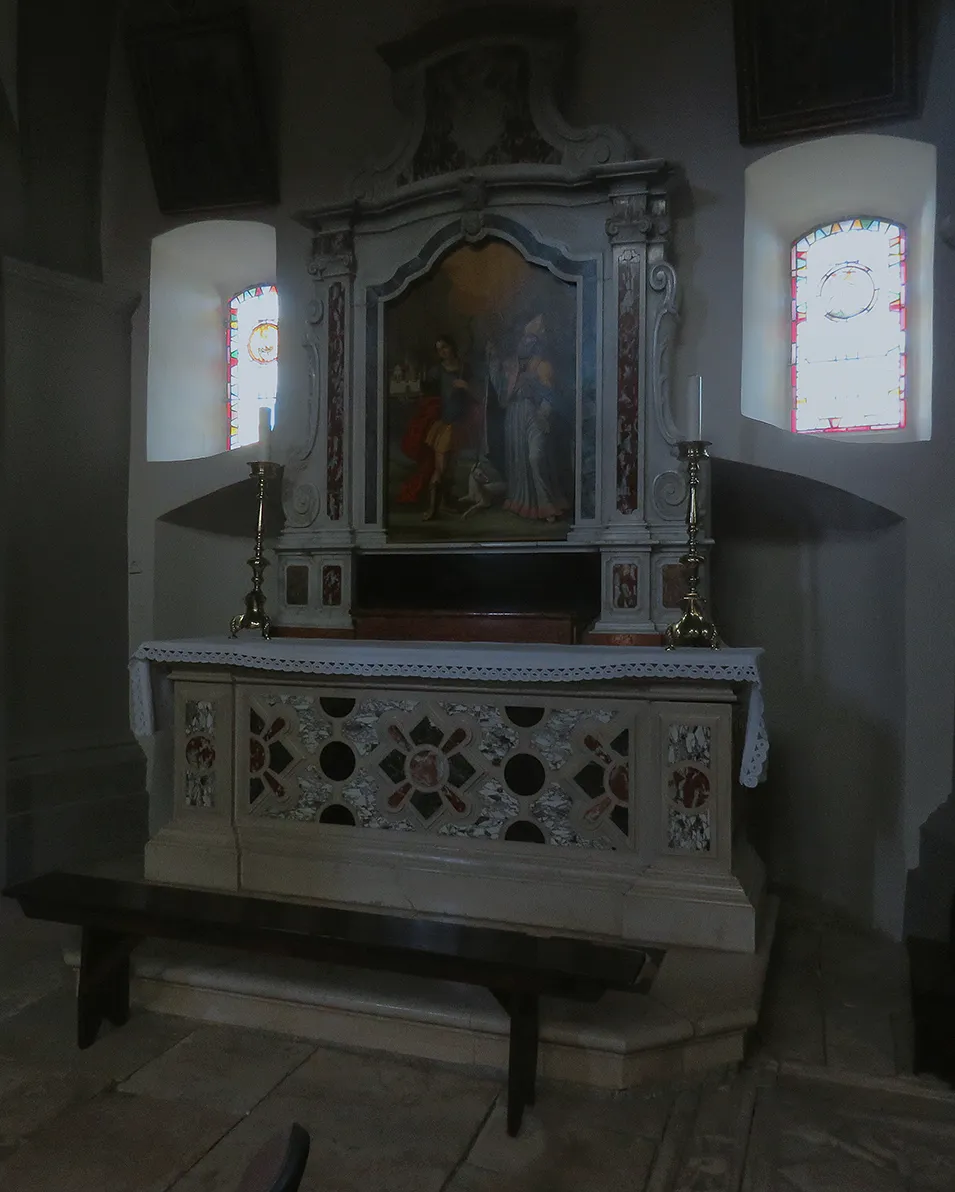
I like how they look but can't tell you much about their age and origin. I can only show you the pictures, that's all.
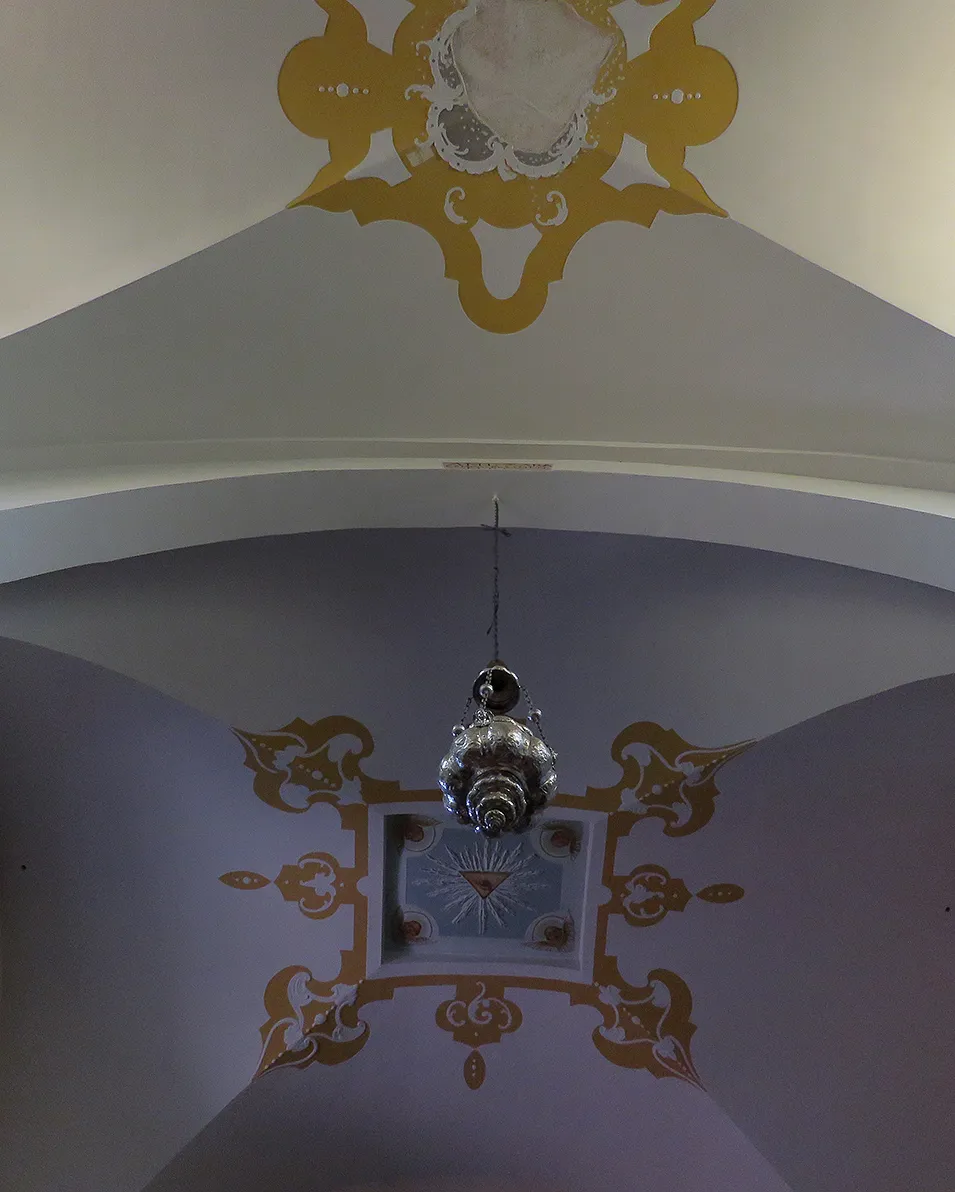
Here you can take a look at the ceiling ...
... and continue admiring the baroque elements.
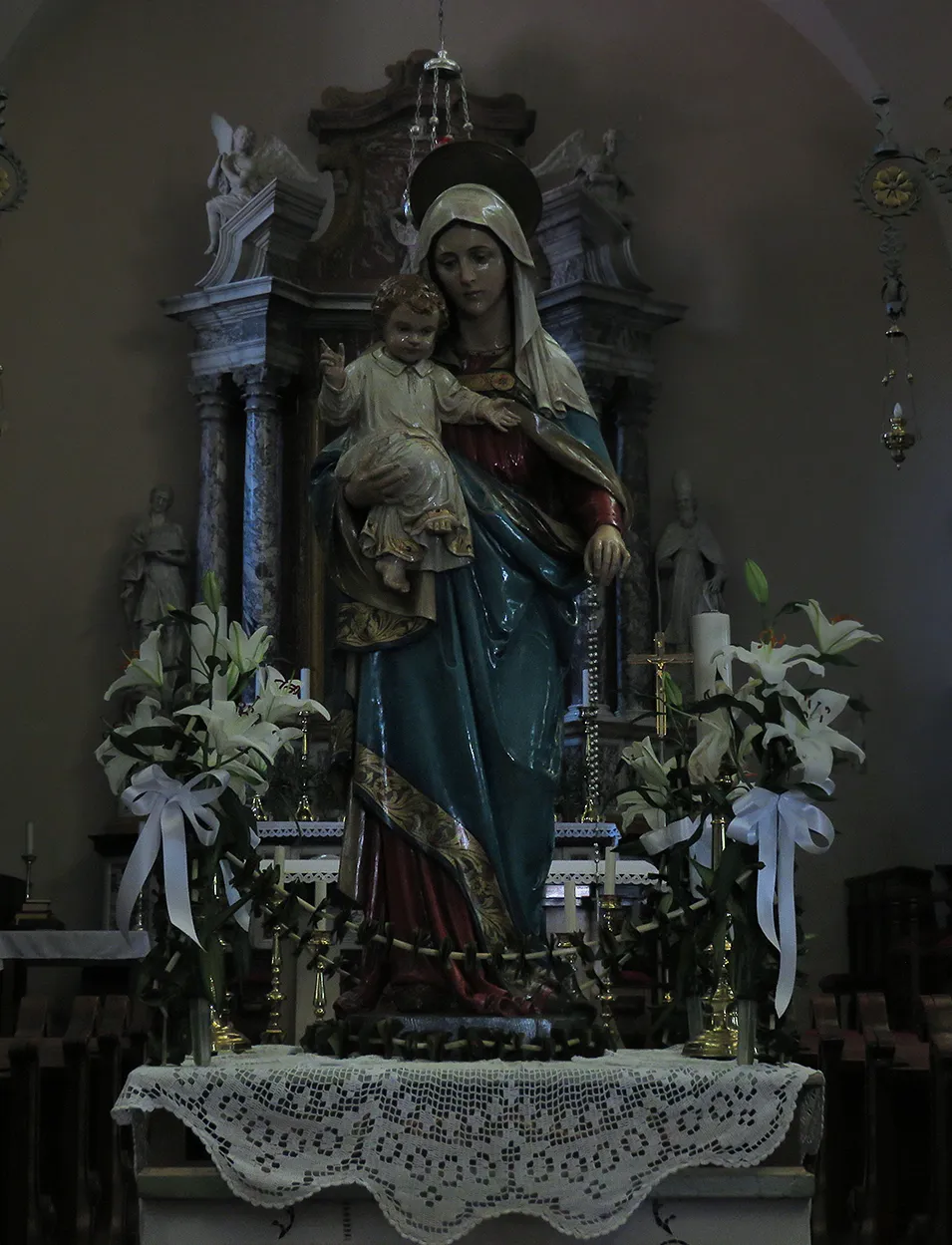
The statue of the Madonna was standing between two rows of benches, more or less in the middle of the church.

With this photograph, uploaded and embedded in the post, I showed you everything I collected through the lens of my camera in the interior of the former cathedral.
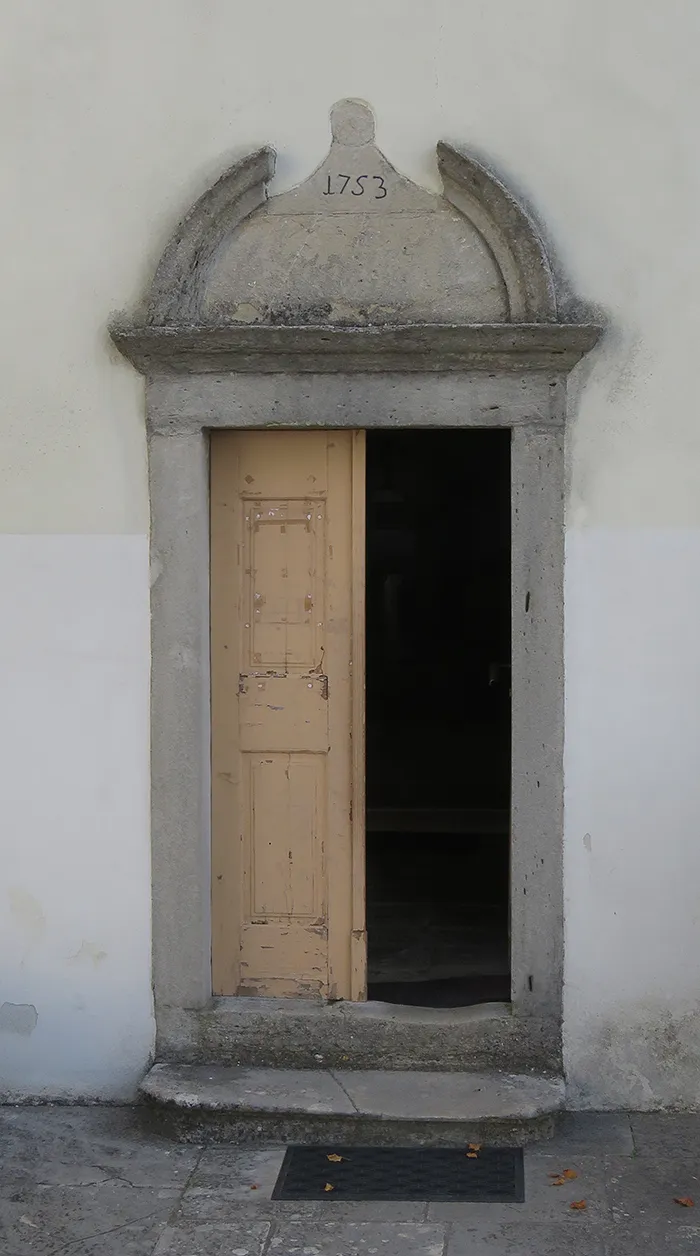
It's time to exit the building ...
... and explore a few more outdoor details. Here you can see an interesting ruin on the square behind the church.
While rambling around the edge of the village ...
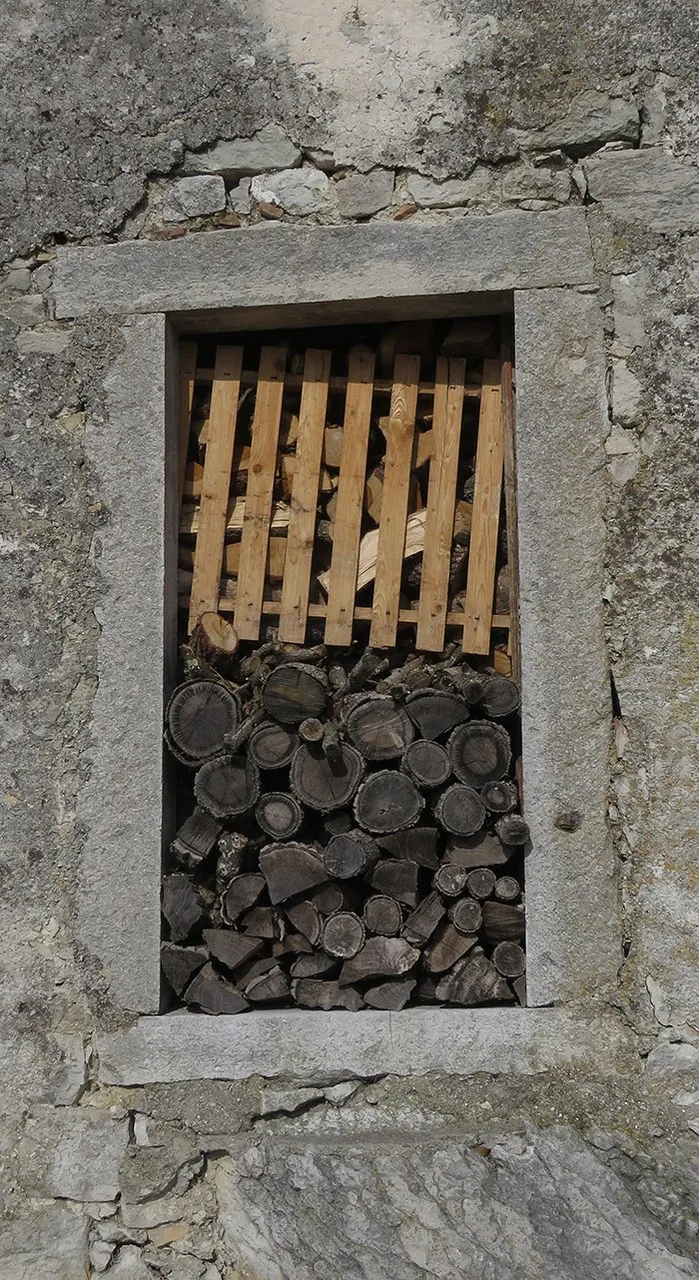
... I came across a room filled with logs that were staring at me through the glassless window.
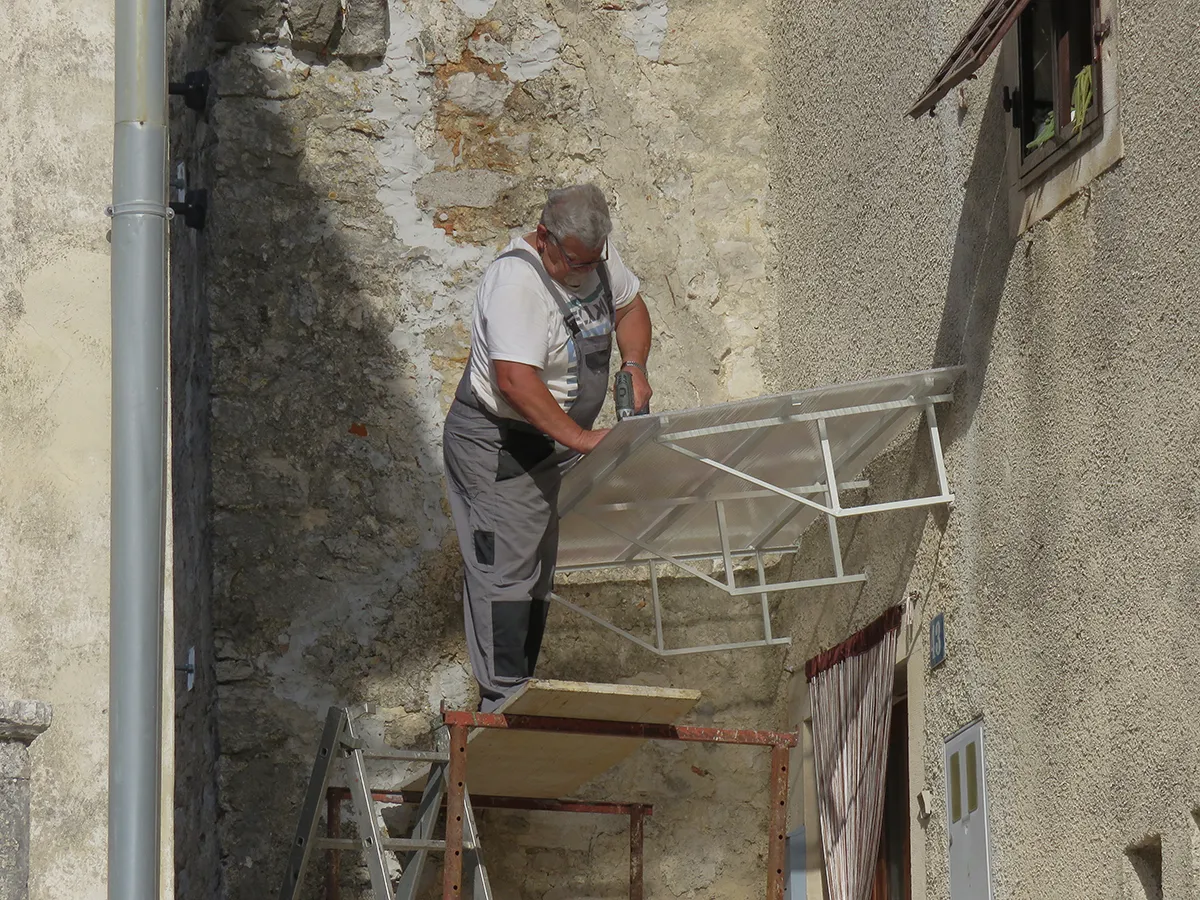
Not far from there, still on the edge of Pichan ...
... a man was working on the shed above the door of one of the houses.
I followed the work for a minute and then walked back to the car parked outside the compact, once-fortified old town that is only a sparsely populated village now.
Internet sources I used to dig up information about the times when The Parish Church of the Annunciation of the Blessed Virgin Mary was a cathedral are all Croatian sources written in Croatian. Mostly Tourist board stuff. I used only data and didn't copy the sentences. I can add the links to those short articles if necessary.
AND THAT'S IT. AS ALWAYS IN THESE POSTS ON HIVE, THE PHOTOGRAPHS ARE MY WORK.



